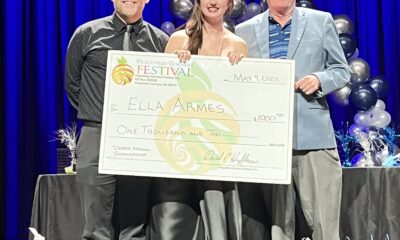Around Atlanta
High Museum is Exclusive Southeast Venue for Dawoud Bey Photography Retrospective
Published
5 years agoon
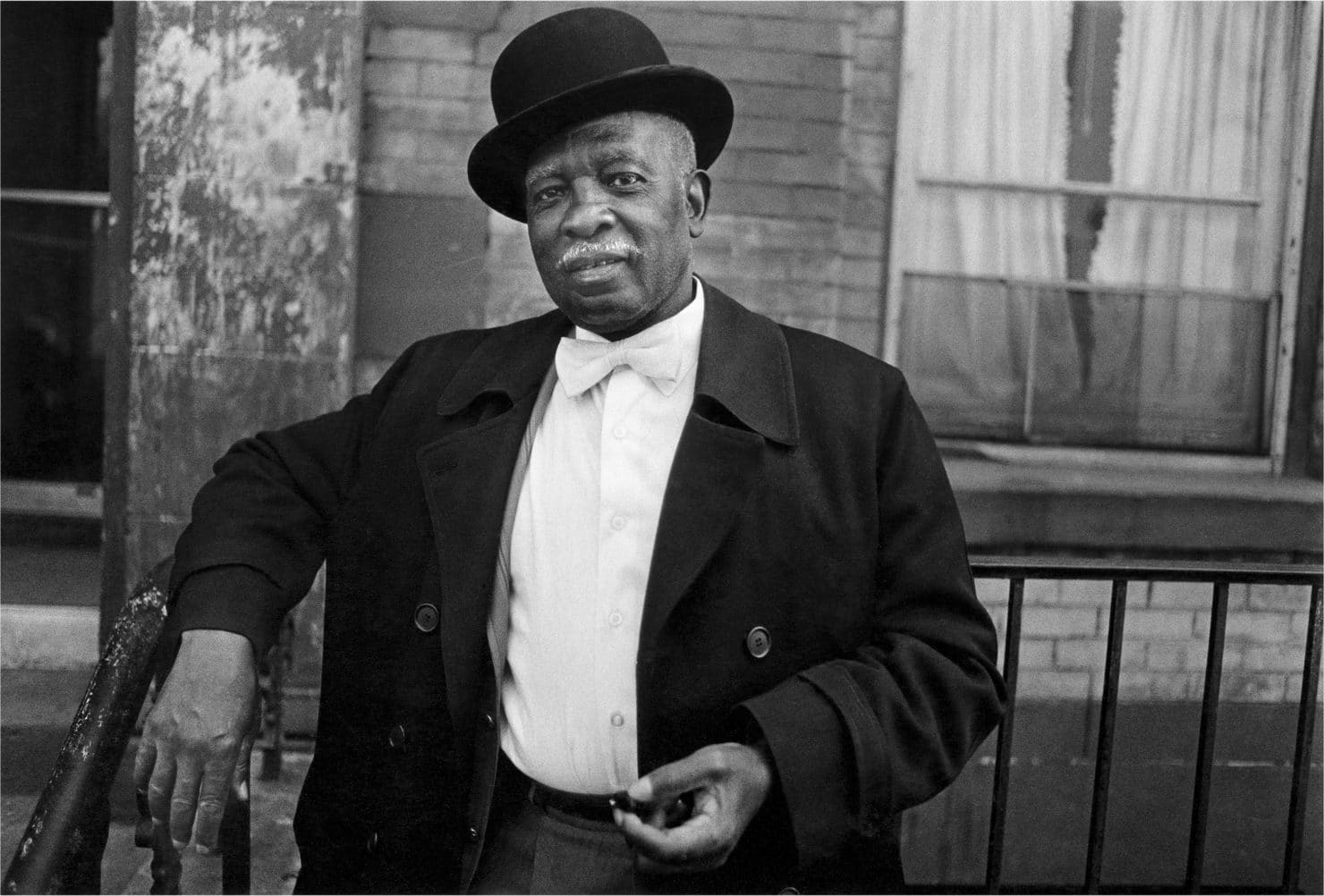
For more than four decades, renowned photographer Dawoud Bey has created powerful and tender photographs that portray underrepresented communities and explore African American history. From portraits in Harlem and classic street photography to nocturnal landscapes and large-scale studio portraits, his works combine an ethical imperative with an unparalleled mastery of his medium. Coming this fall, the High Museum of Art will celebrate his important contributions to photography as the exclusive Southeast venue for “Dawoud Bey: An American Project” (Dec. 12, 2020-March 14, 2021), the artist’s first full career retrospective in 25 years.
Co-organized by the San Francisco Museum of Modern Art (SFMOMA) and the Whitney Museum of American Art, New York, the exhibition will feature approximately 80 works that span the breadth of Bey’s career, from his earliest street portraits made in Harlem in the 1970s to his most recent series reimagining sites of the Underground Railroad (2017).
The High has enjoyed a long and fruitful relationship with Bey, who was commissioned in 1996 for the Museum’s inaugural “Picturing the South” series, which asks noted photographers to turn their lens toward the American South. For his project, Bey collaborated with Atlanta high school students to create empathetic, larger-than-life portraits. Made with the monumental 20-by-24-inch Polaroid camera, these photographs explore the complexity of adolescence as a time of critical identity formation and expand the concept of portraiture. The High now holds more than 50 photographs by Bey, one of the most significant museum collections of his work.
“Bey’s portraits are remarkable for their keen sensitivity and for how they elicit and honor their subjects’ sense of self, which is partly an outcome of the artist’s collaborative practice,” remarked Sarah Kennel, the High’s Donald and Marilyn Keough Family curator of photography. “Given the museum’s long relationship with Bey and the strength of our holdings, we are thrilled to present this important retrospective. We look forward to sharing the artist’s photographs and his powerful and moving reflections on African American history and identity in their country with our visitors.”
Bey, born in 1953 in Queens, New York, began to develop an interest in photography as a teenager. He received his first camera as a gift from his godmother in 1968, and the next year, he saw the exhibition “Harlem on My Mind” at The Metropolitan Museum of Art. Widely criticized for its failure to include significant numbers of artworks by African Americans, the exhibition’s representation of Black subjects nonetheless made an impression on Bey and inspired him to develop his own documentary project about Harlem in 1975. Since that time, he has worked primarily in portraiture, making tender, psychologically rich and direct portrayals, often in collaboration with his subjects. More recently, he has explored seminal moments in African American history through both portraiture and landscape.
“Dawoud Bey: An American Project” will include work from the artist’s eight major series and is organized to reflect the development of Bey’s vision throughout his career and to highlight his enduring engagement with portraiture, place and history.
The Street
Bey’s landmark black-and-white 1975-78 series “Harlem, USA” documents portraits and street scenes with locals of the historic neighborhood in New York. As a young man growing up in Queens, Bey was intrigued by his family’s history in Harlem, where his parents met and where he visited family and friends throughout childhood. The series premiered at the Studio Museum in Harlem in 1979, when Bey was just 26.
In addition to works from that series, the exhibition will include a remarkable series of street photographs Bey made in Syracuse, New York, that demonstrate his keen eye for portraiture and his ability to respond with both spontaneity and sensitivity to his subjects and their environment. These works are accompanied by more formal street portraits that Bey created in the 1980s in areas such as Brooklyn, New York, and Washington, D.C. Made with a large-format camera and Polaroid film, these photographs reflect a more intimate and enduring exchange between Bey and his subjects, and by extension, the viewer.
The exhibition will also feature the series “Harlem Redux,” which marks Bey’s return to the area from 2014 to 2017. This newer series of large-format color landscapes and streetscapes at once documents and mourns the transformation of the community as it has become more gentrified and its original residents increasingly displaced.
The Studio
After honing his skills in street photography, Bey moved toward studio work in the 1990s, using a massive 20-by-24-inch Polaroid camera to make a series of sensitive and direct color portraits, first of friends and later of teenagers he met through a 1992 residency at the Addison Gallery of American Art in Andover, Massachusetts. At the time, Bey also began to experiment with beautifully lit multipanel Polaroid portraits that challenge the singularity of the photographic print and suggest the complexity of identity.
In 2002, a residency at the University of Chicago’s Smart Museum of Art inspired Bey to begin the series “Class Pictures.” Using a view camera to create striking, large-scale color portraits of high school students, Bey asked the students to write narratives to accompany the photographs. Over the next four years, Bey continued work on the series at high schools across the United States. By focusing on teenagers from a wide range of economic, social and ethnic backgrounds and giving them an opportunity to reveal their thoughts, fears and dreams at a critical moment of identity formation, Bey created a diverse group of thoughtful and introspective portraits that challenge stereotypes of adolescence.
History
The exhibition closes with works from two of Bey’s most recent series exploring African American history and collective memory.
“The Birmingham Project,” created in 2012 as a commission from the Birmingham Museum of Art, memorializes the victims of the 1963 bombing of the 16th Street Baptist Church in Birmingham, Alabama, and its violent aftermath. The series features expressive portraits of children who are the same age as the bombing victims paired with photographs of adults who are the ages those children would have been in 2012 had they lived. The photographs, along with an accompanying video piece, are stirring reminders of the precious lives lost and foreground the enduring legacy of racism and violence against African Americans.
In 2017, Bey completed “Night Coming Tenderly, Black,” a series of beautifully rendered and evocative images made in Ohio where the Underground Railroad once operated. As landscapes, the large black-and-white photographs mark a departure from the artist’s previous work, but they emphasize many of the same existential questions. The series, whose title is drawn from a Langston Hughes poem, conjures the spatial and sensory experience of an enslaved person’s escape to liberation as imagined by the artist. Shot by day but printed in deep shades of black and gray as if they were taken at night, these evocative and mysterious works explore blackness as both color and metaphor for race.
“Dawoud Bey: An American Project” will be presented in the High’s Wieland Pavilion Lower Level.
Related
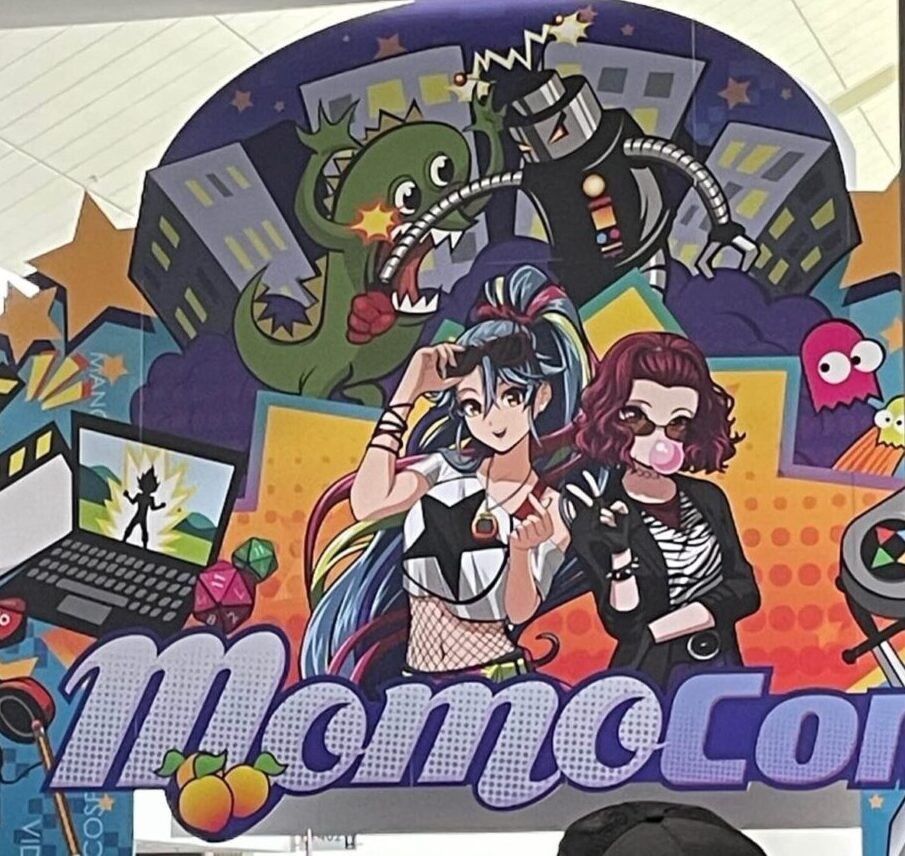
Annual multi-genre convention celebrating Japanese anime, American animation, comics and gaming sets new record with 59,222 attendees
— Article updated May 29, 2025
Atlanta welcomed nearly 60,000 fans of cosplay, comics, gaming, anime and music over the four-day Memorial Day weekend — all meeting up at the Georgia World Congress Center to celebrate MomoCon 2025 and its 20th year in the city.
One of the fastest growing, all-ages conventions in the country, this year’s numbers topped the 56,000 guests that attended in 2024, and was estimated by the Atlanta Convention & Visitors Bureau to have a $42.2 million impact on the metro area.
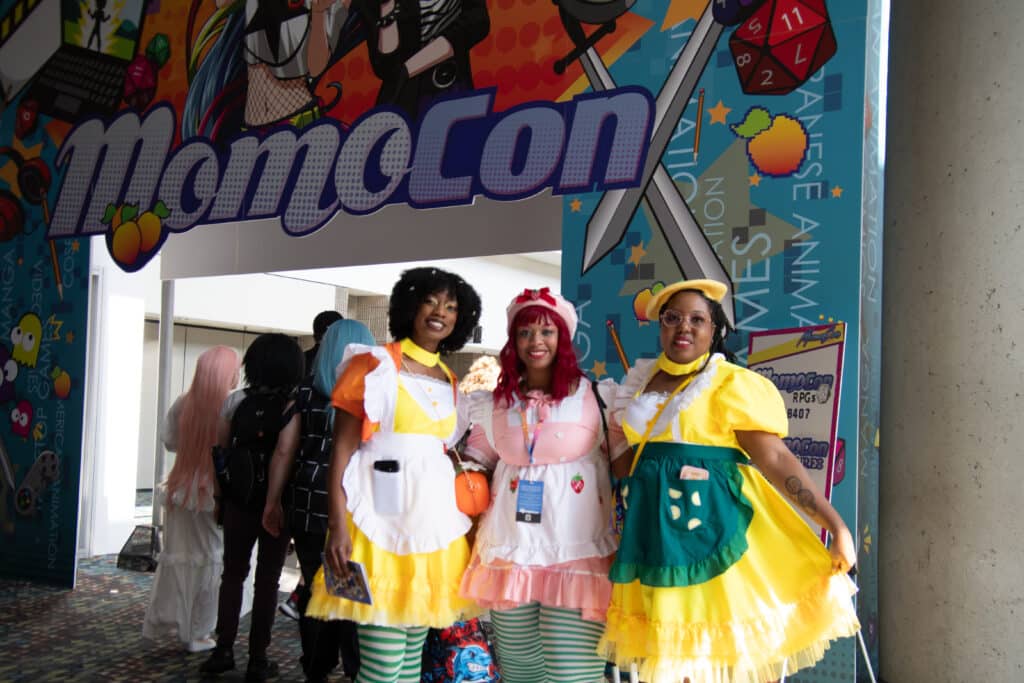
Equally important, the buzzing enthusiasm and pure joy of the weekend, from both attendees and featured guests, was unmatched. Everyone seemed to be having an incredible time. And plans are already in the works for an even more impressive — and expanded — MomoCon experience in 2026.
Organizers say they are expanding into both Hall A and Hall B next year, increasing the total space to a massive 1,045,178 square feet for exhibits and gaming. The team is already hard at work planning amazing new guests and activities for MomoCon’s 21st year.
Registration for next year’s event is already open, with early-bird discounts for fans who want to lock their passes in early.
Giving back to the community
In addition to the money brought into the city and to the convention itself, MomoCon chooses a charity each year in which to support with donations. Funds are raised through sales of specialty merchandise and custom events that have donation elements built in.
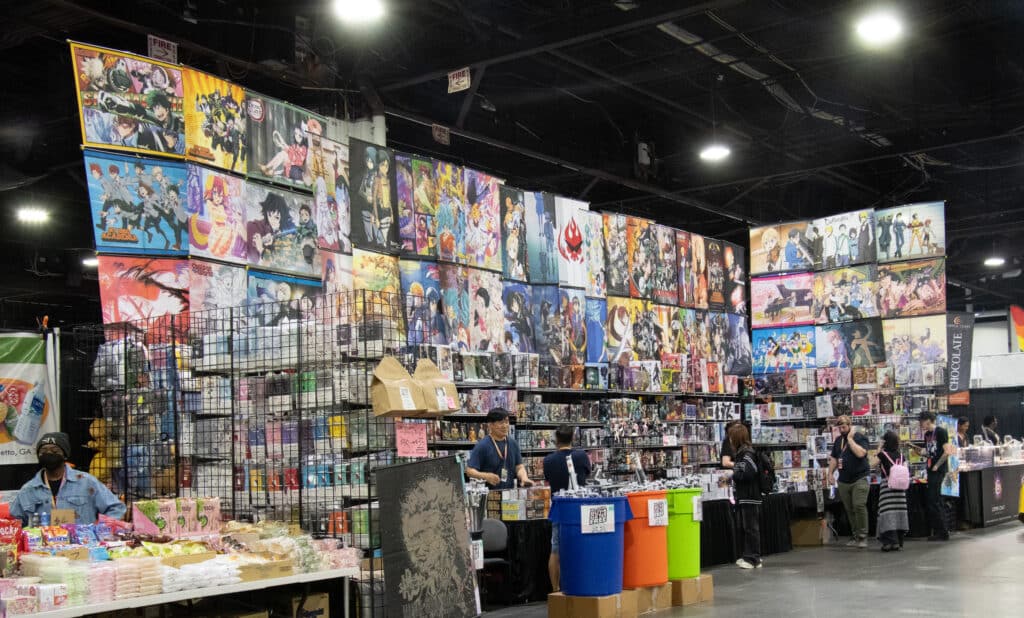
The 2025 official charity was the Johnson STEM Activity Center. MomoCon raised more than $5,000 for the center and contributed an additional $7,500 in matching funds, bringing the total donation to $12,500. MomoCon organizers also worked with 11 Atlanta-area, youth-serving nonprofits to give back by bringing more than 900 kids in need to the convention.
Nonprofits receiving tickets this year included Scouting America, Horizons Atlanta, ReImagine ATL, the New Media Education Foundation of Georgia, Purpose Possible, Lekotek, Focus, Boys & Girls Clubs of Metro Atlanta, Big Brothers Big Sisters of Atlanta, Wellroot Family Services and the YMCA.
Fan-favorite comic book artists
Comic book artists (and original members of the former Atlanta-based Gaijin Studios), Cully Hamner and Brian Stelfreeze made their first appearances at MomoCon this year, invited to attend and show off their work in the Artist Alley.
Fans lined up to meet them, along with fellow award-winning artist and longtime friend, Wade von Grawbadger, to get photos, autographs and artwork and spend a few minutes chatting with the guys.
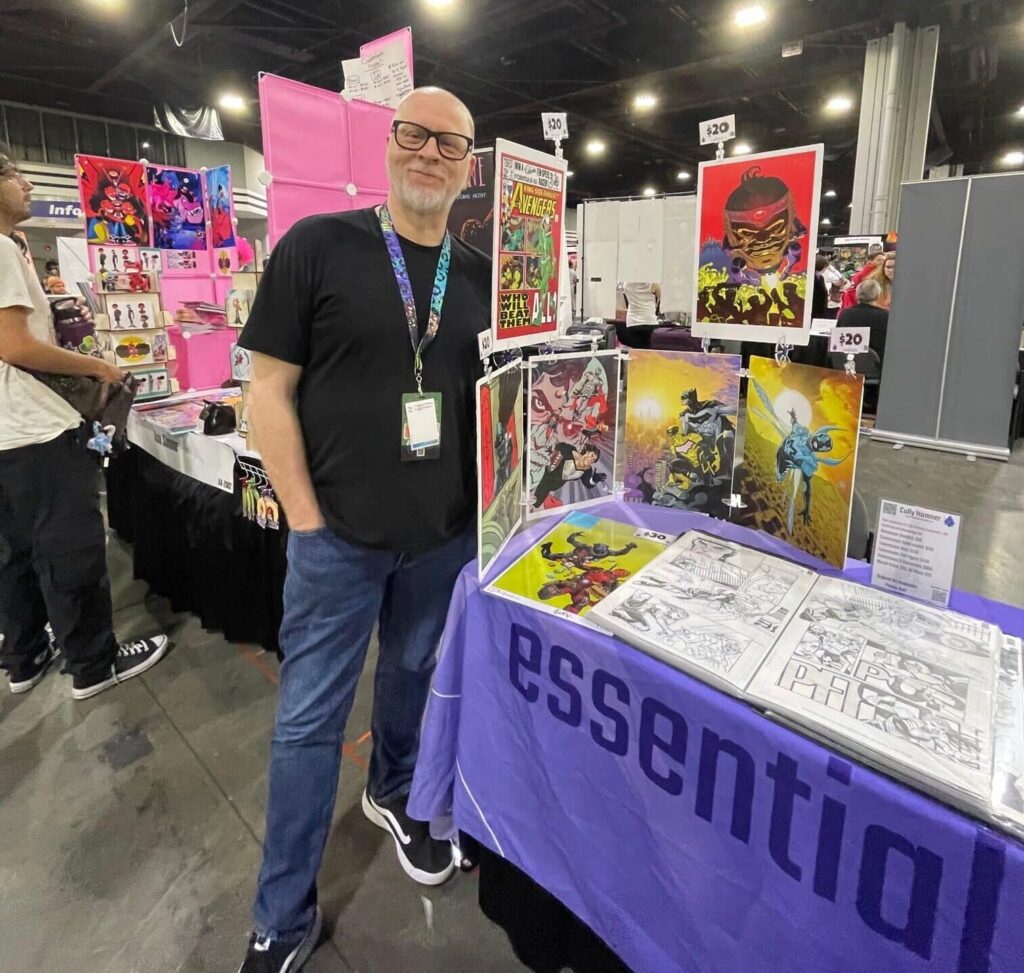
Hamner talked briefly about an upcoming project, “Ruby Actual” that he’s doing with Greg Rucka. “Not sure when it will come out,” he said, “But we’re hoping first quarter 2026.”
In the meantime, comic fans can continue to enjoy his previous work — the acclaimed, creator-owned RED (which was adapted into two films), the current Blue Beetle (also adapted to film) and all of the other work he’s done for DC, Marvel and other publishers over the last 30 years.
They can also look forward to his return to MomoCon in the future if schedules work out.
“This has been a lot of fun,” Hamner said on Sunday, the last day of the convention. “I’d love to come back if they invite me again.”
Stelfreeze agreed. “I enjoyed [MomoCon],” he said. “I really liked seeing the younger audience.”
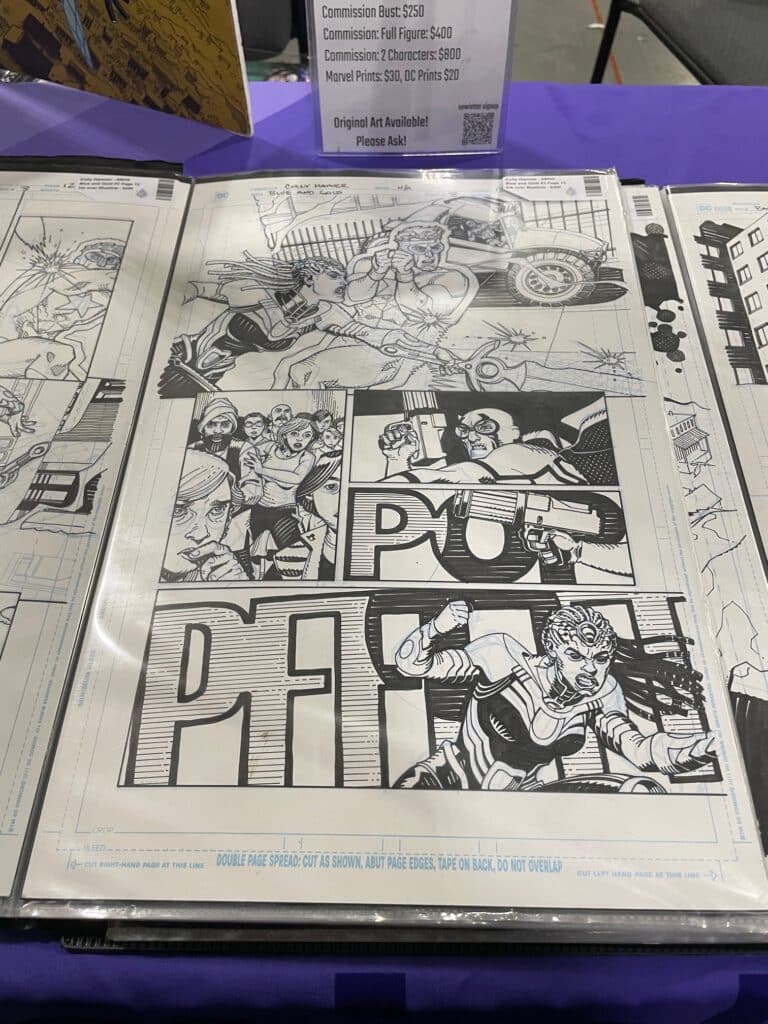
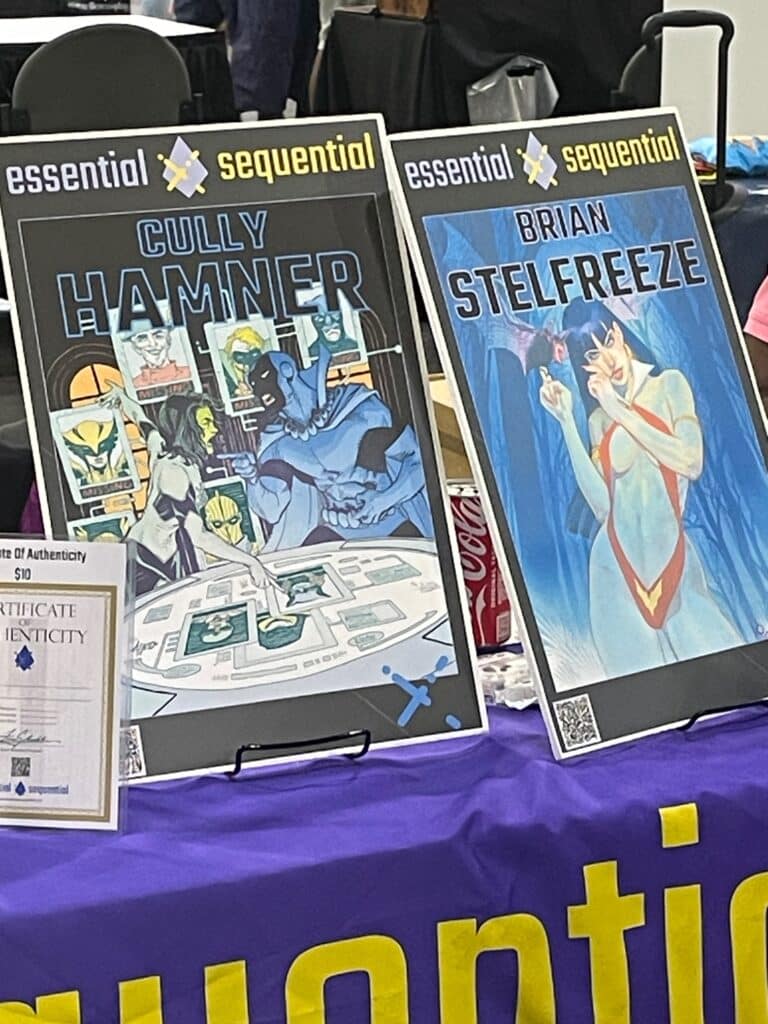
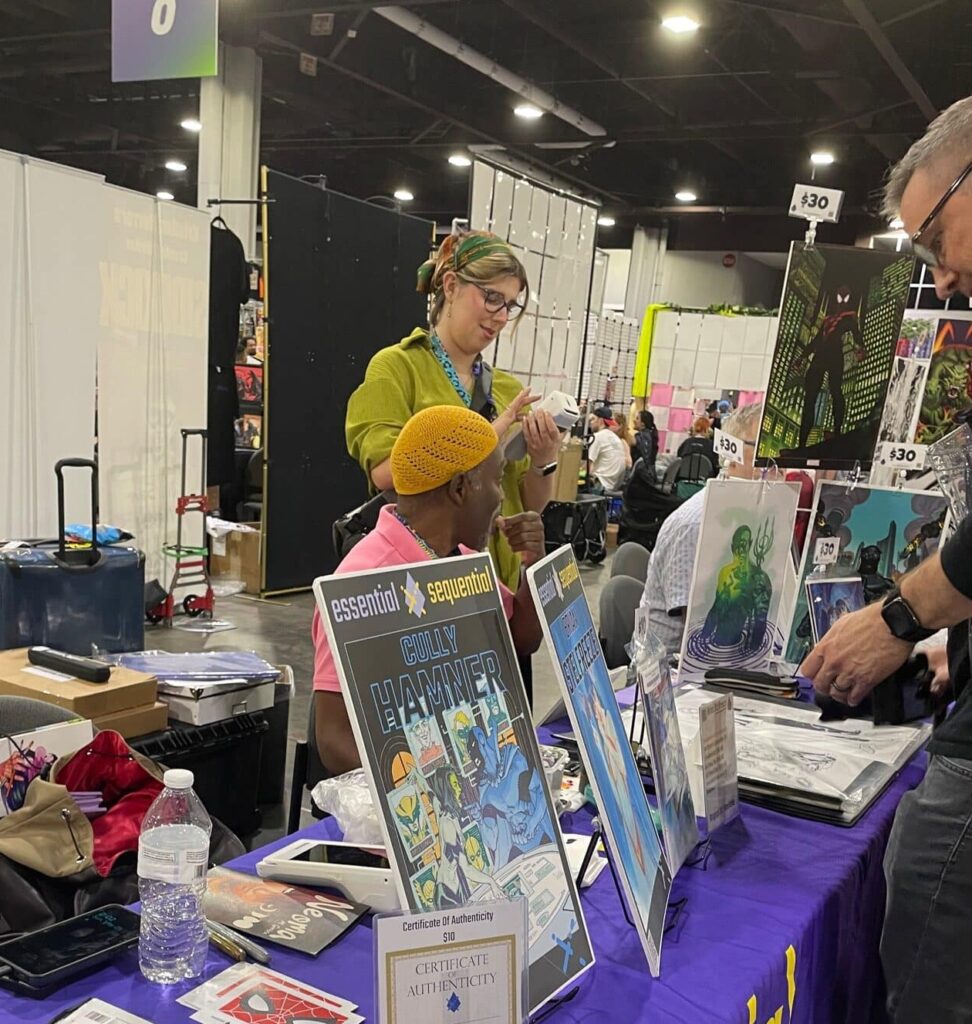
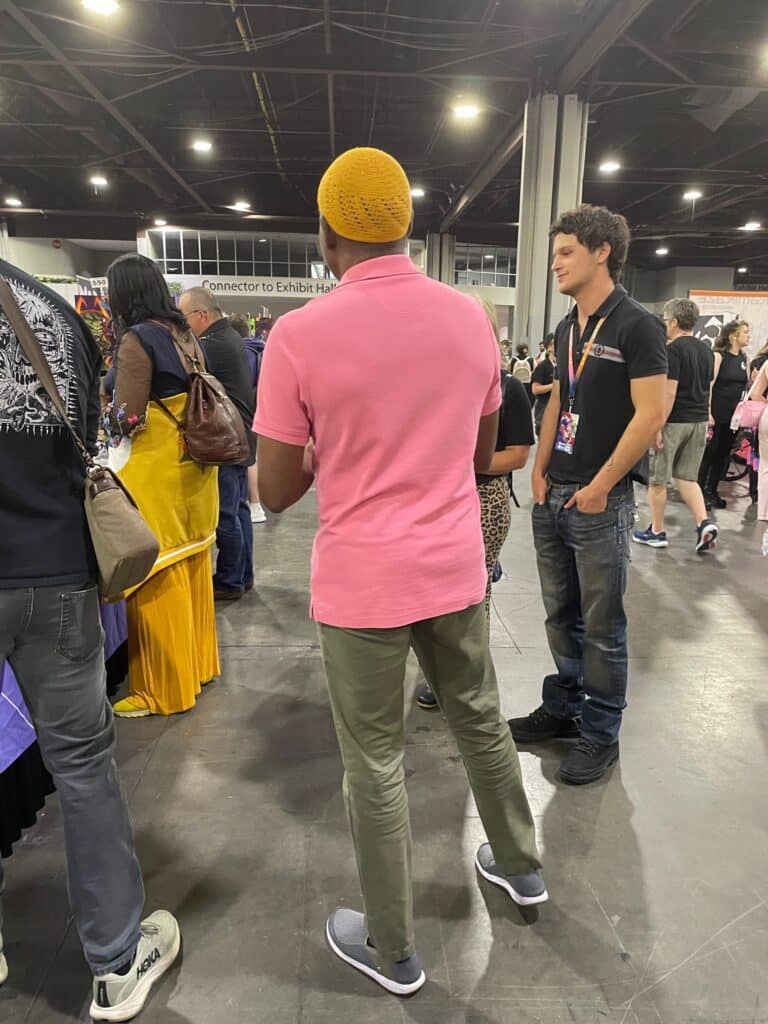
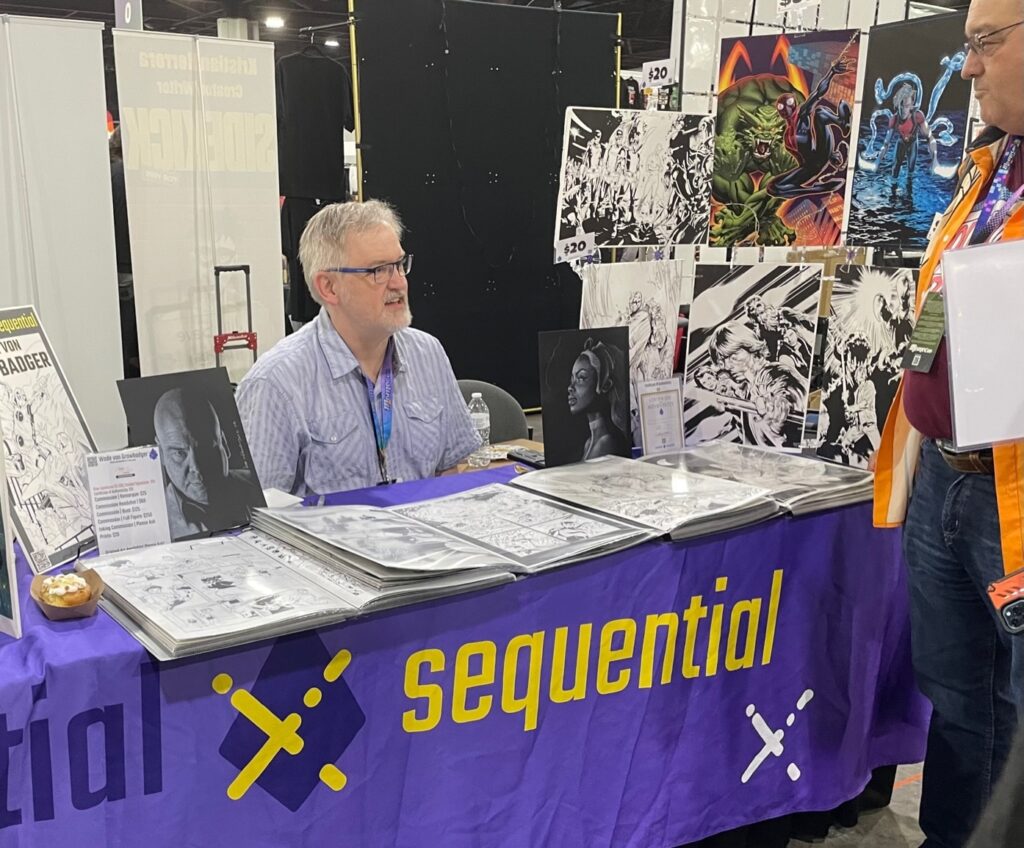
That definitely seemed true on Sunday, as the crowds had thinned out some and Stelfreeze had more time to hang out and talk with people who stopped by the Essential Sequential booth. With some fans, he spent ten minutes or more discussing art, comics and other topics, and even came out from behind the table at times to meet people and say hi to old friends.
Featured guests
Other featured guests also drew long lines of fans who were eager to meet their favorite creators.
Darryl McDaniels (from RunDMC and now a comic book and children’s book author), Greg Burnham (Norcross-based comic book writer known for his indie comic hits), Reed Shannon and Mick Wingert (voice actors and stars of Netflix’s “Arcane”), Ryō Horikawa (Japanese voice of Vegeta in “Dragon Ball Z”), veteran voice actor and producer, Chris Sabat, and online personalities such as Damien Haas were just a few of the standouts.
In fact, as the convention was winding down on Sunday afternoon, Haas’ fan line was still so long, the crowd filled multiple rows of the cordoned-off autograph area, both inside and outside of his designated line.
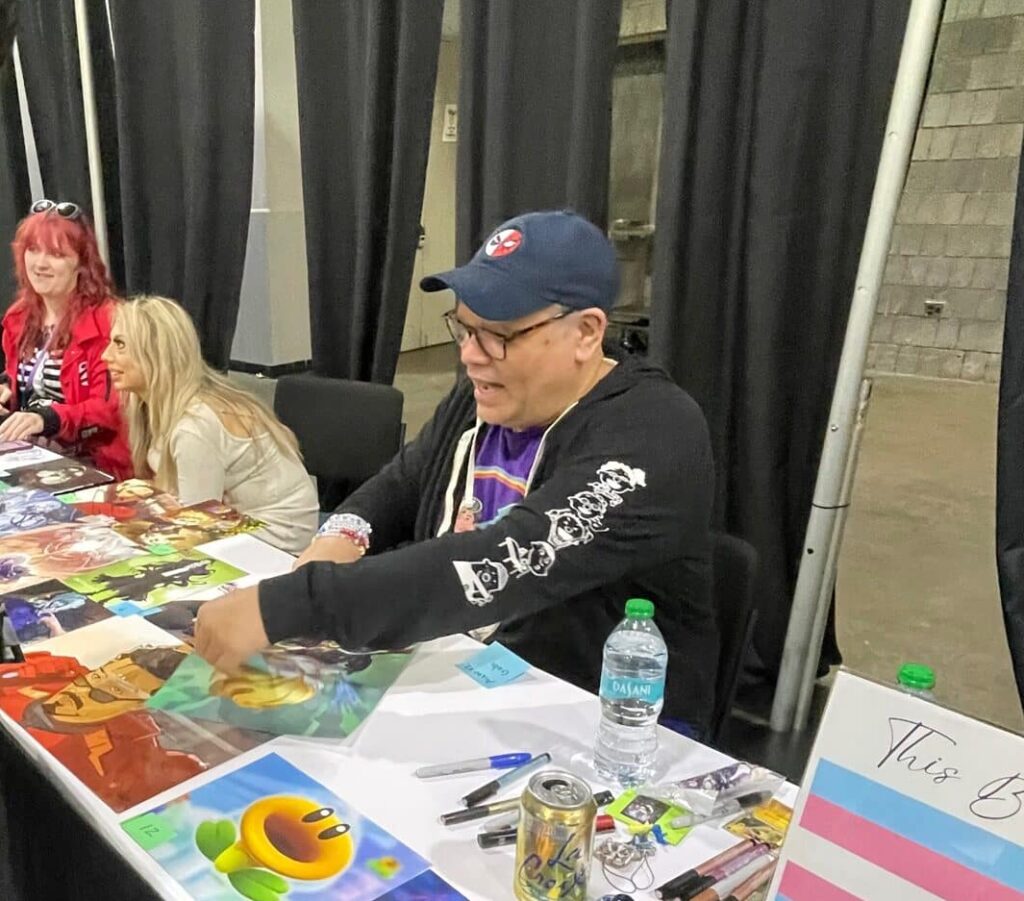
A full list of 2025 celebrity guests can be found here.
New for 2025
While most of the fun features of MomoCon 2025 were returning favorites — Artist Alley, Exhibitor’s Hall, panels, movie screenings and the cosplay showcase —convention organizers kept things fresh with a new theme (‘90s Retro) and a few new highlights, including a skating rink, an expanded online gaming area and the return of the“Bring Your Own Computer” space.
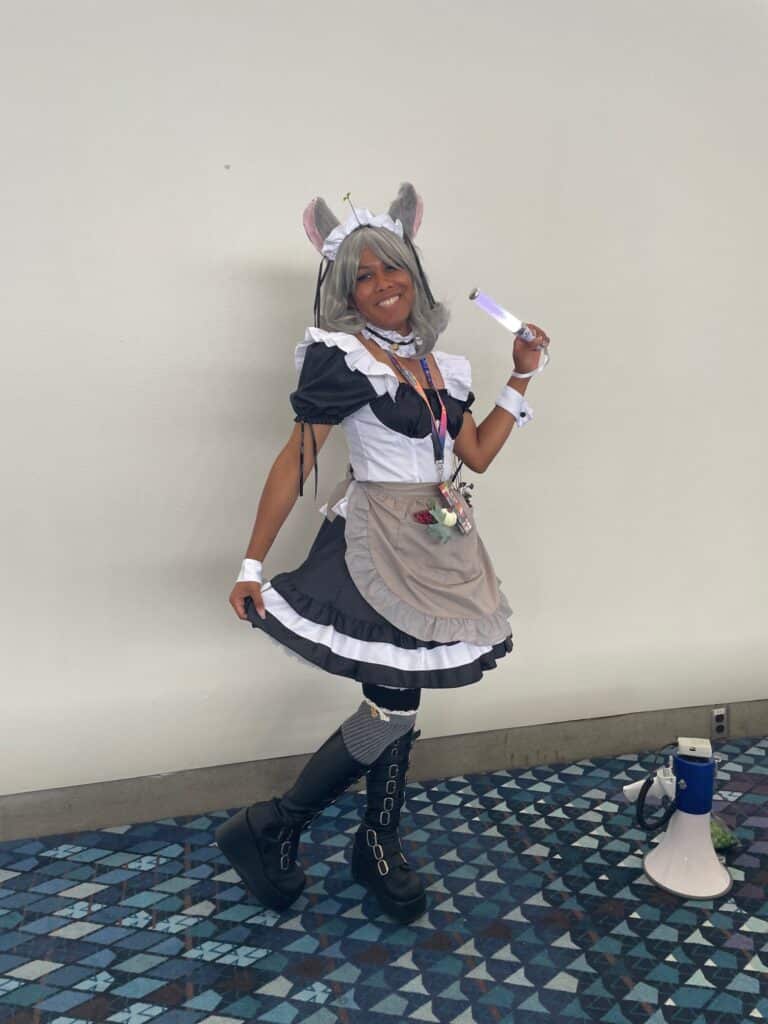
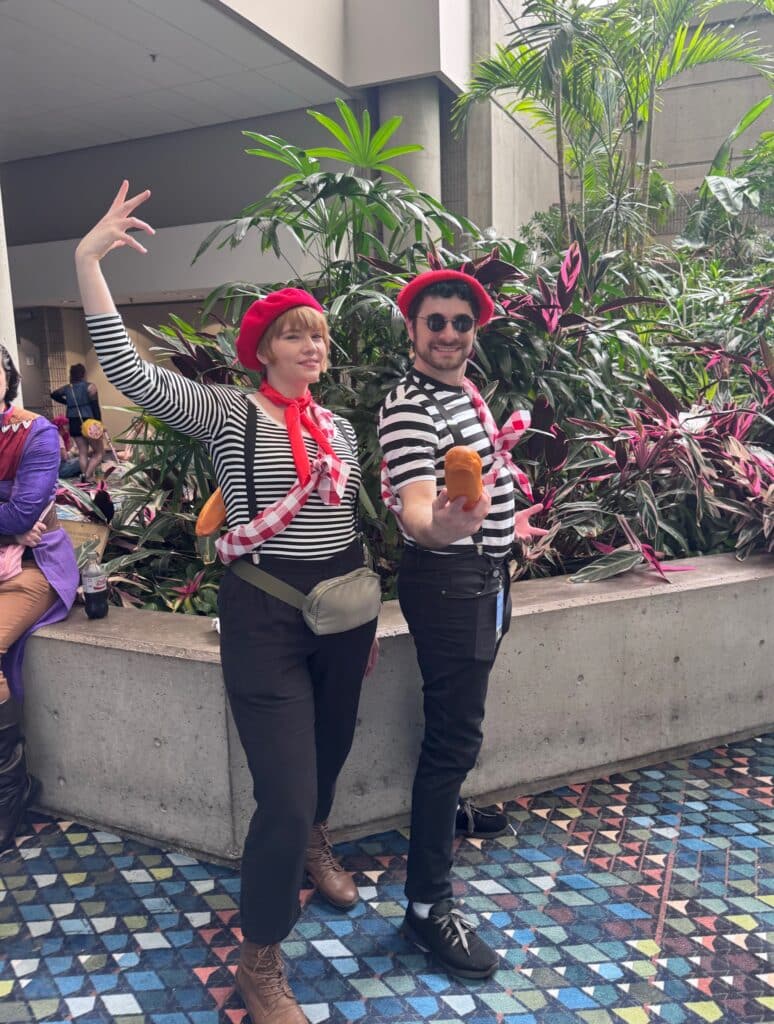
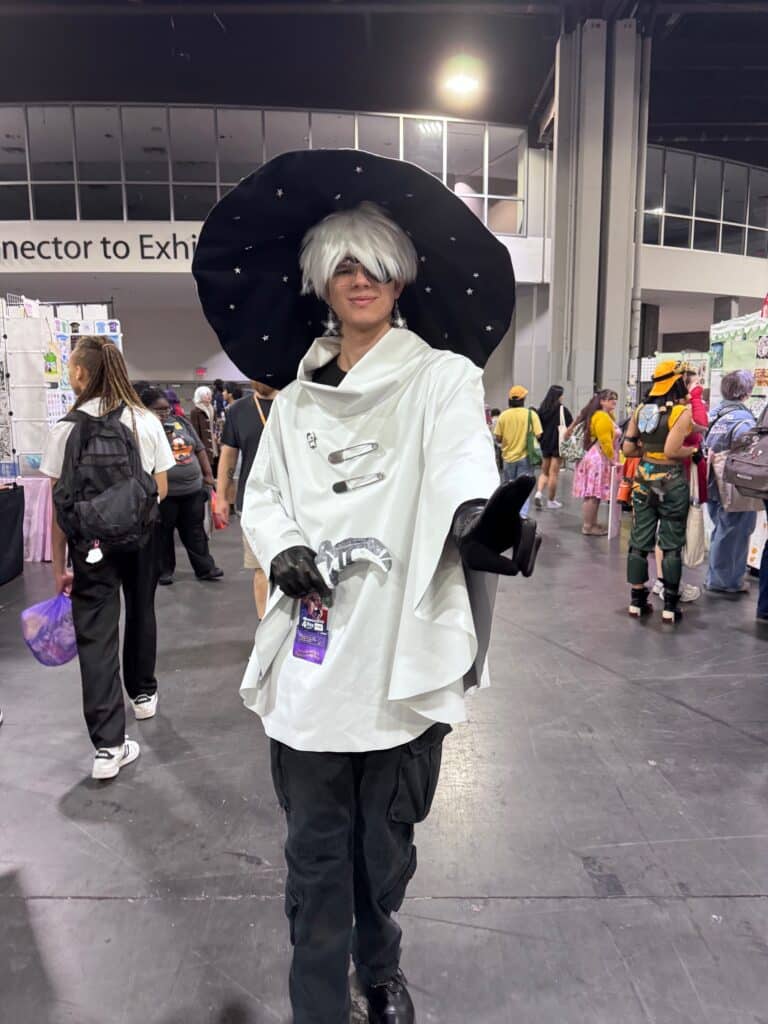
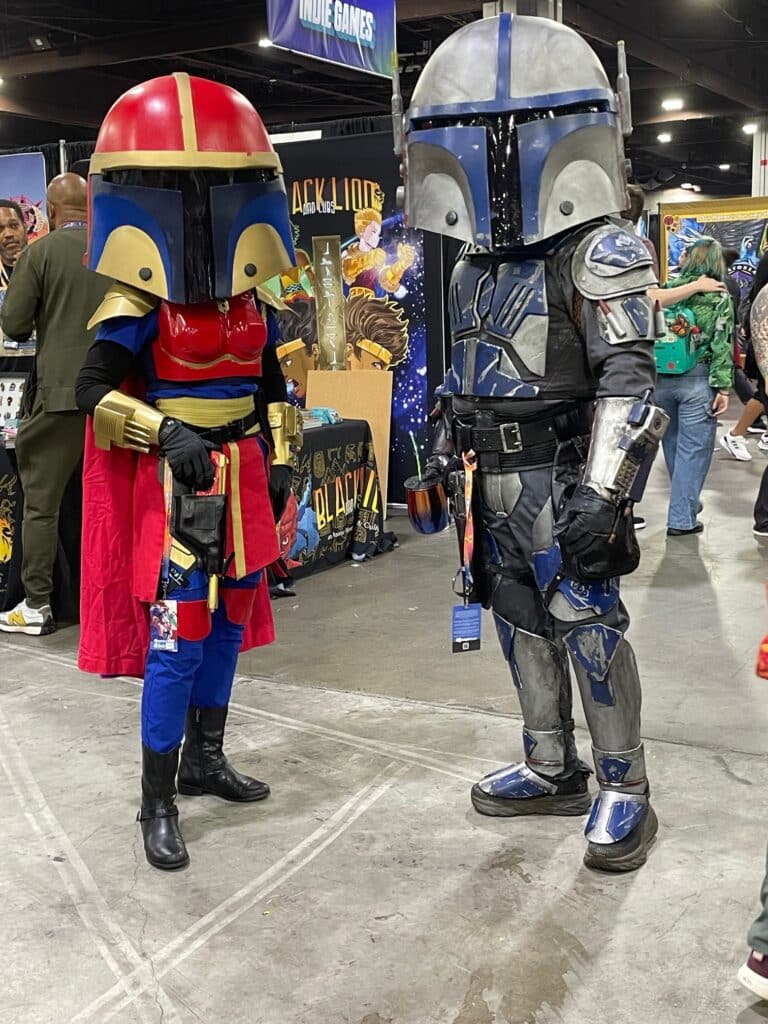
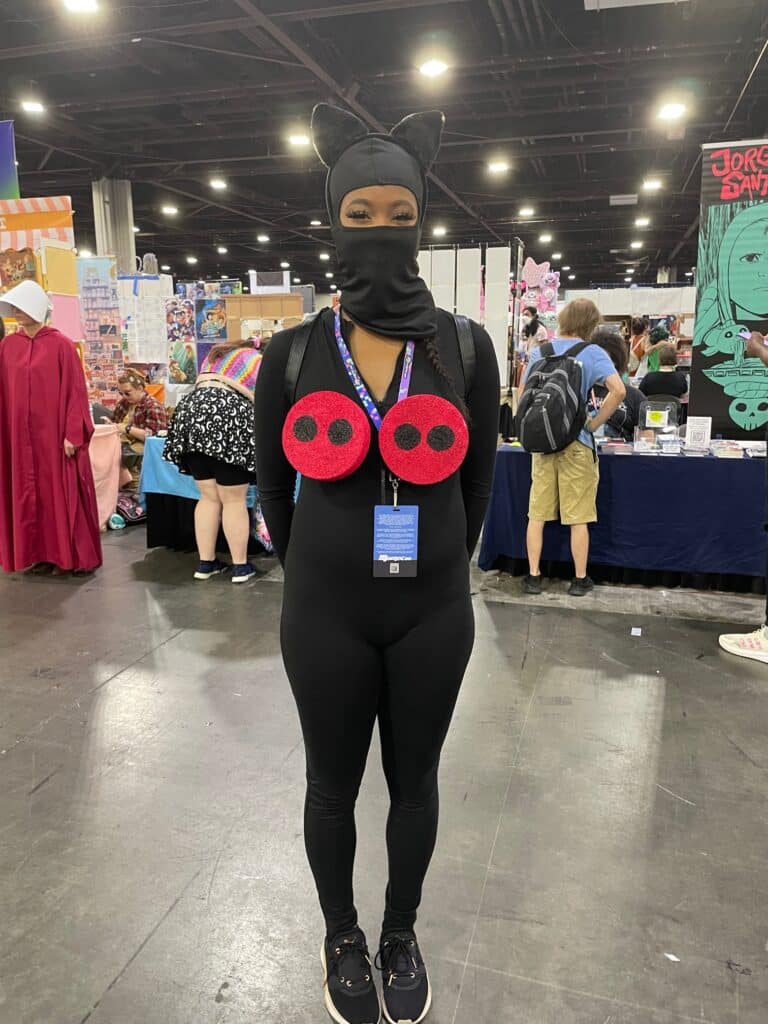
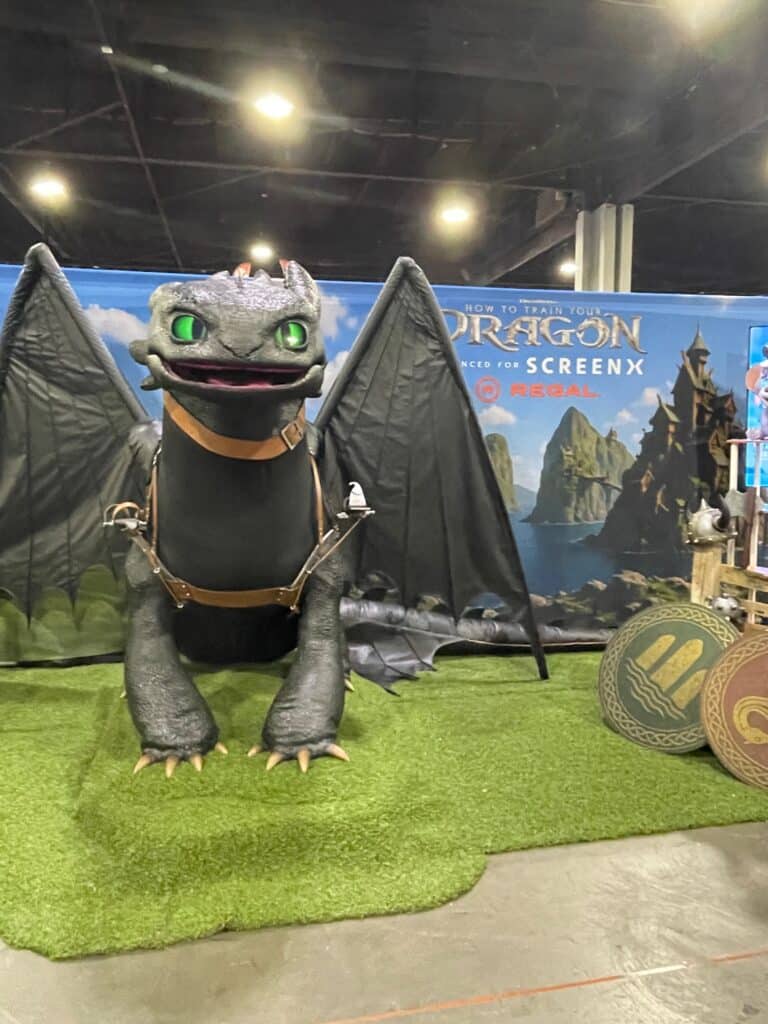
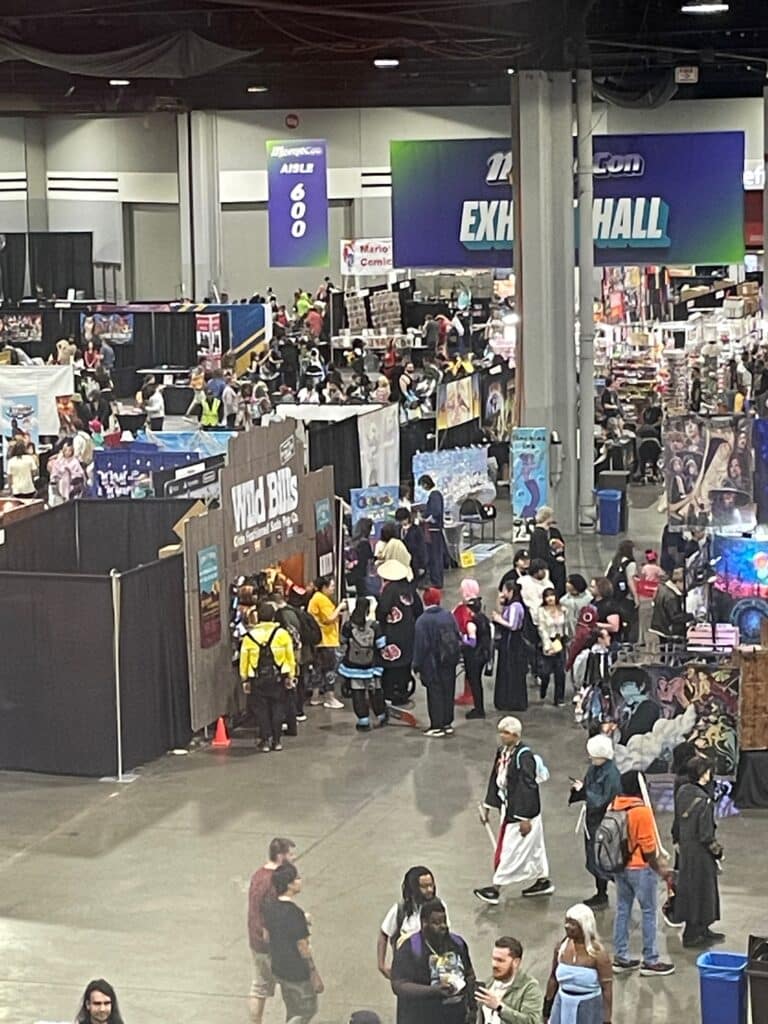
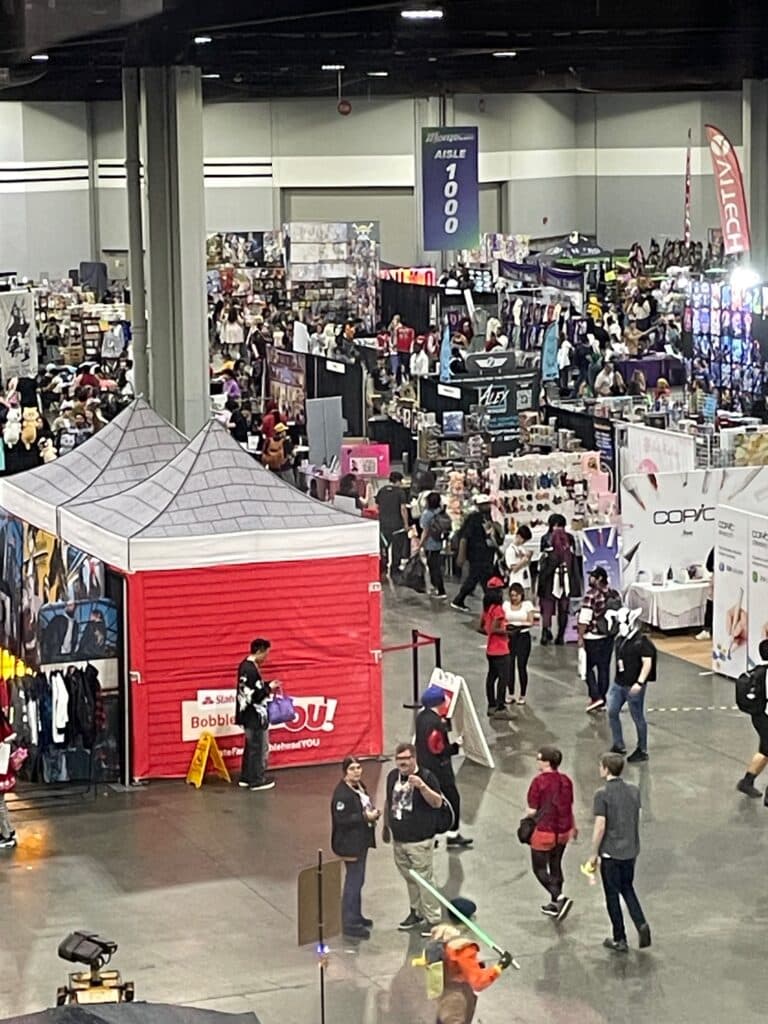
Workshops on everything from miniature painting and D&D to Gunpla modeling, as well as live performances and a massive vendor area and fan car showcase rounded out the exciting weekend.
Though tired from a whirlwind weekend of geek culture camaraderie and large (but super friendly) crowds, we can’t wait to see what MomoCon has in store for 2026.
For more about MomoCon, visit momocon.com.
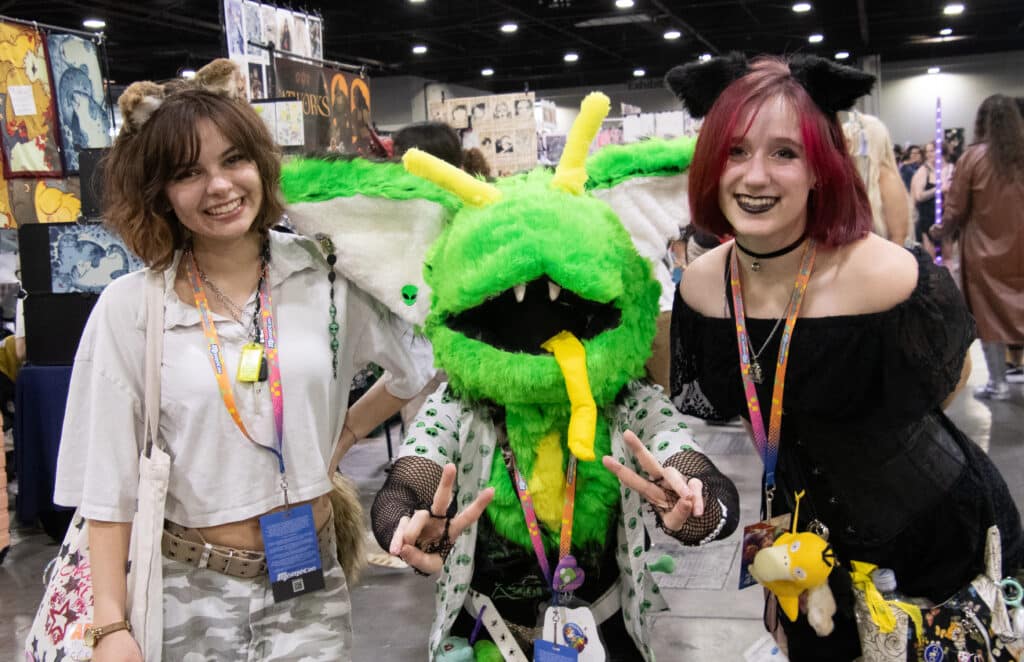
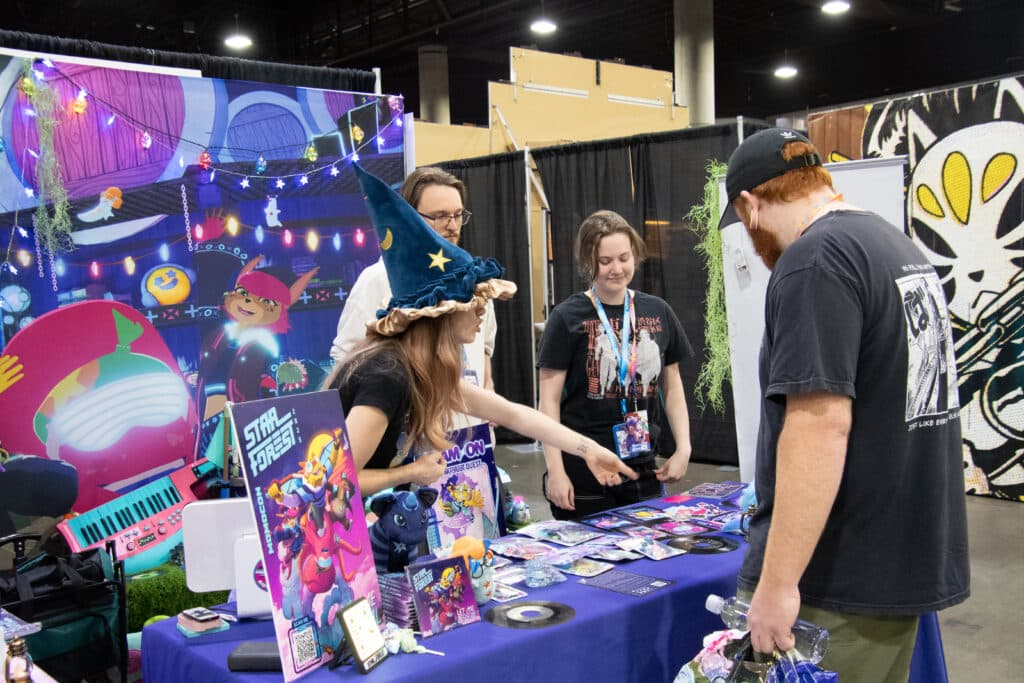
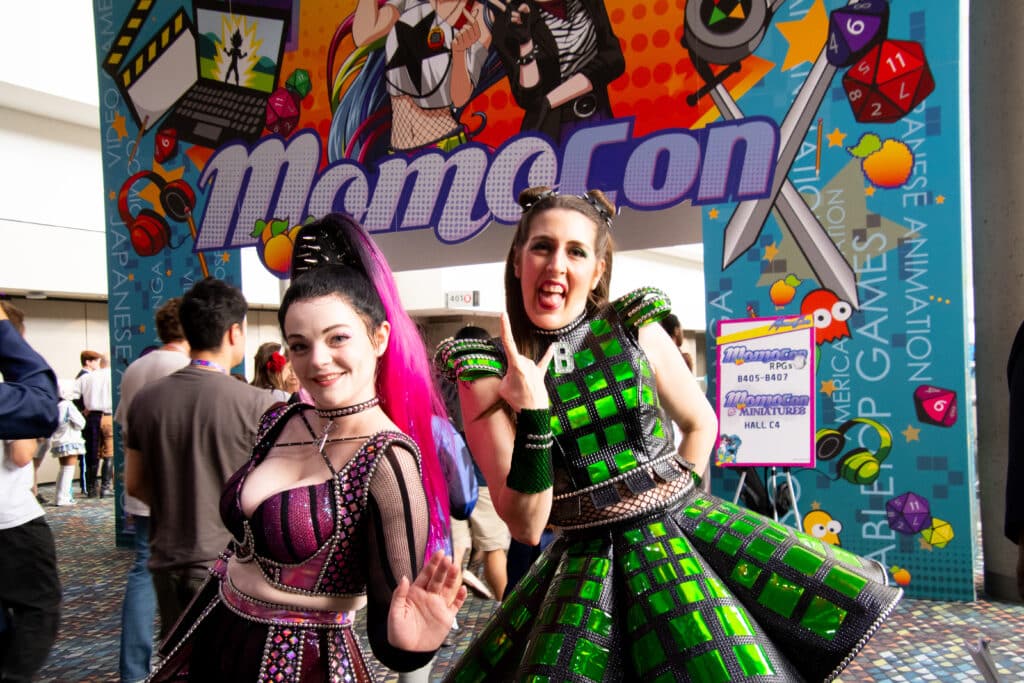

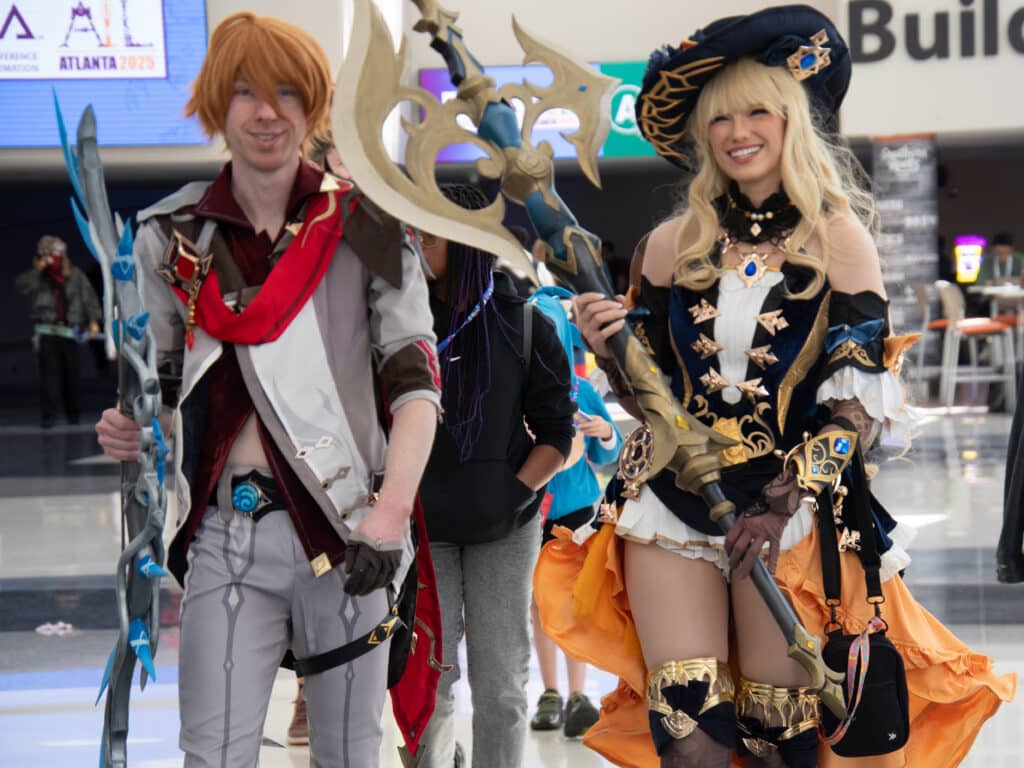
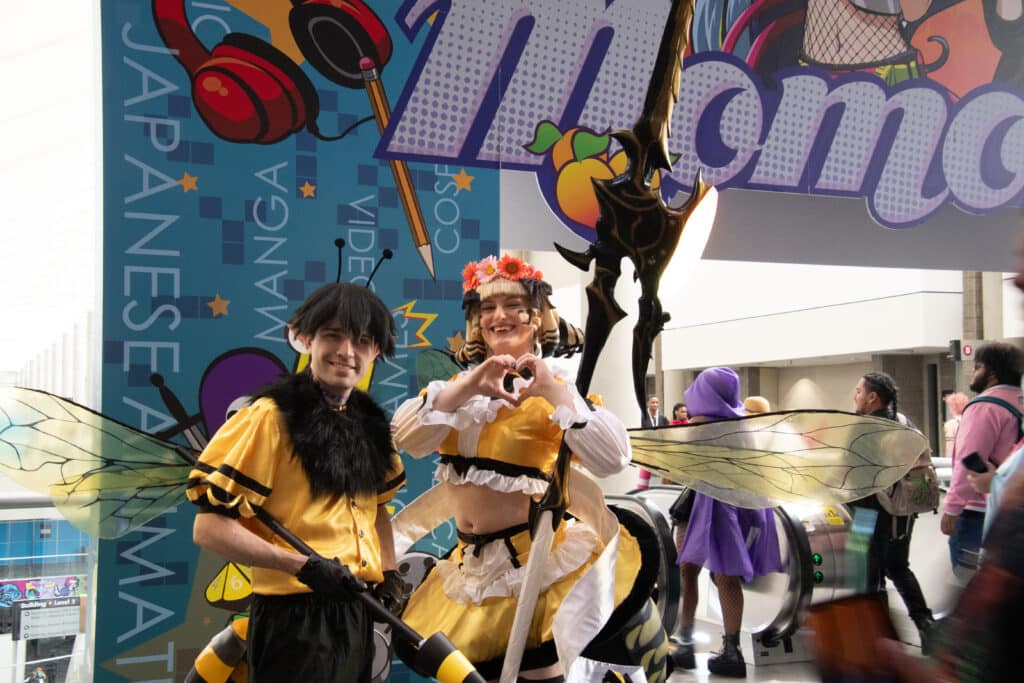
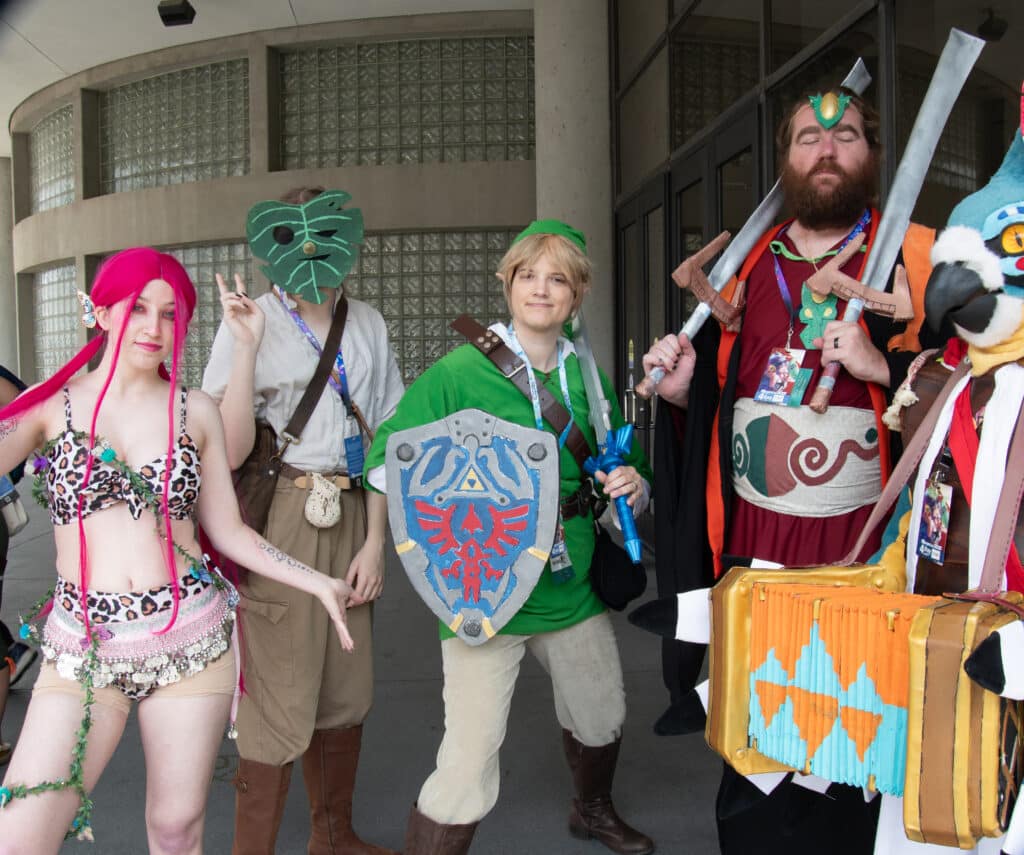
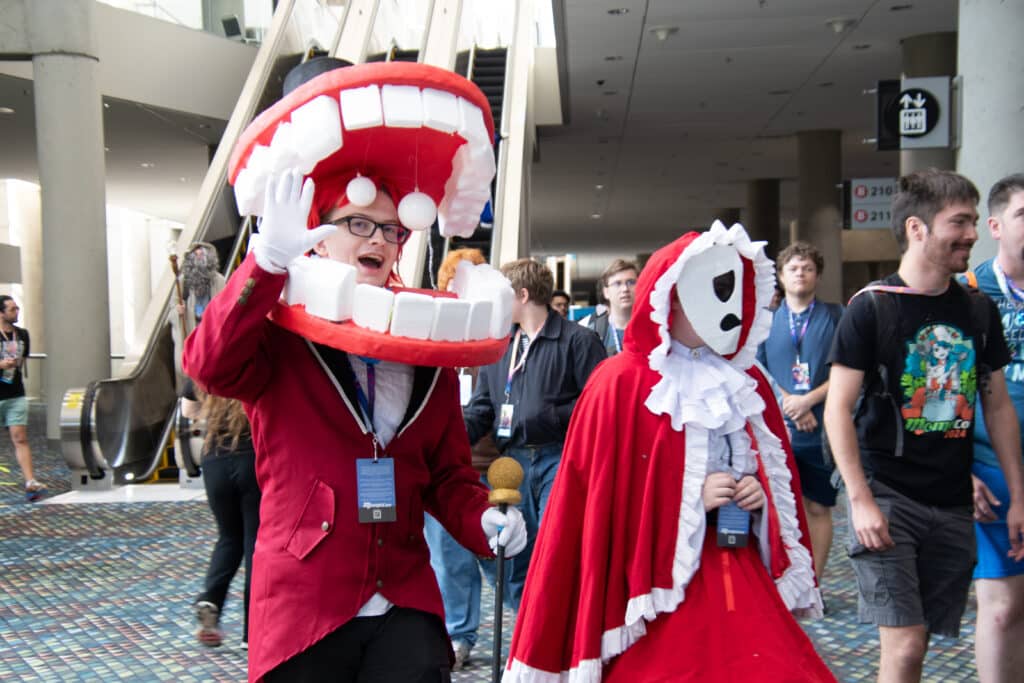
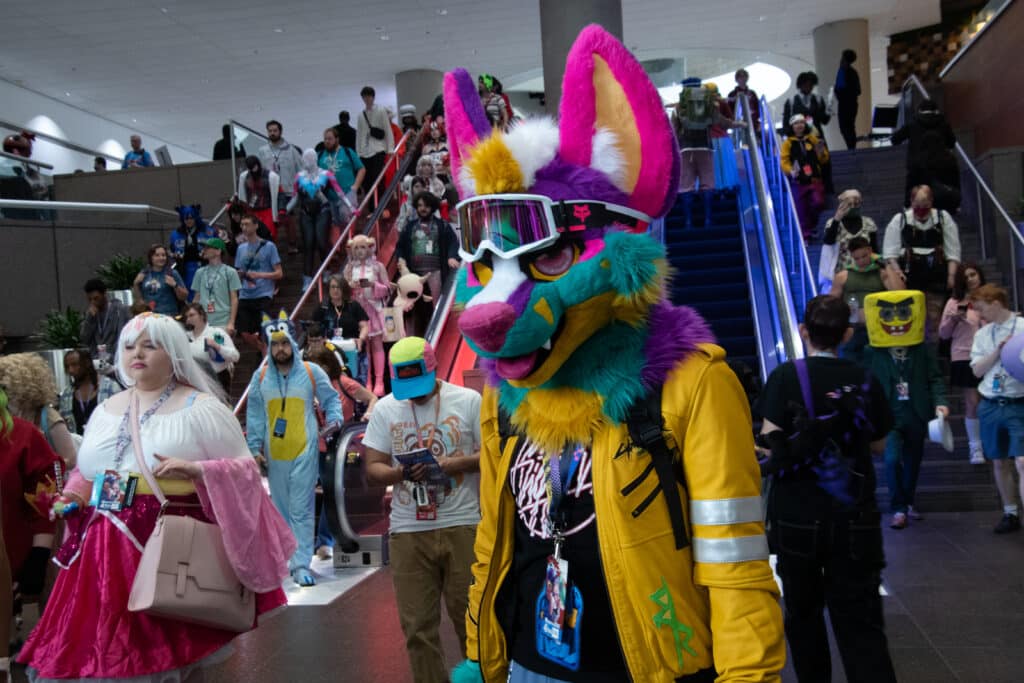
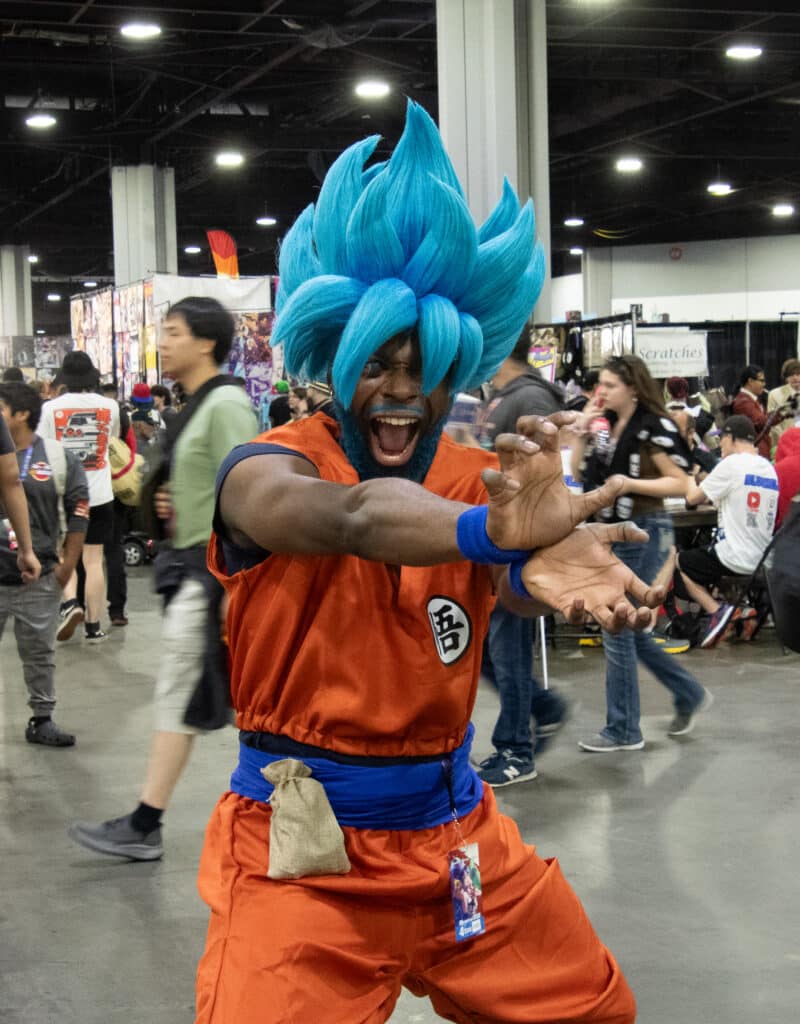
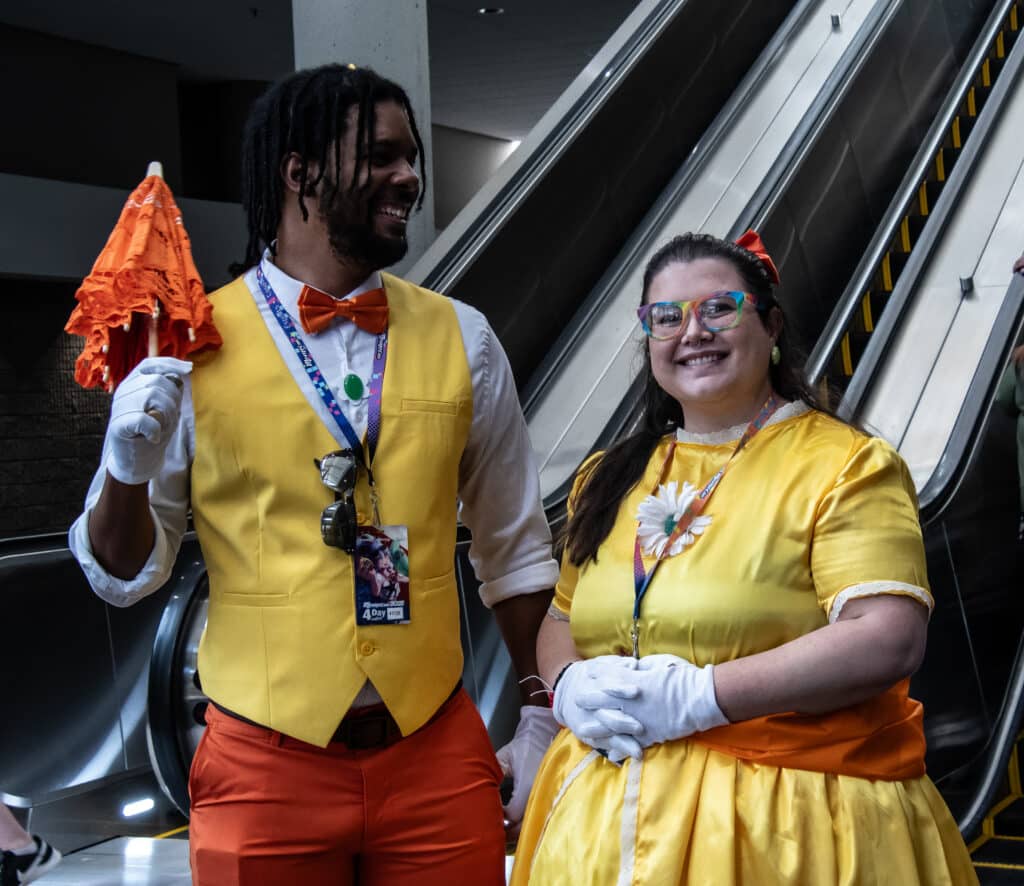
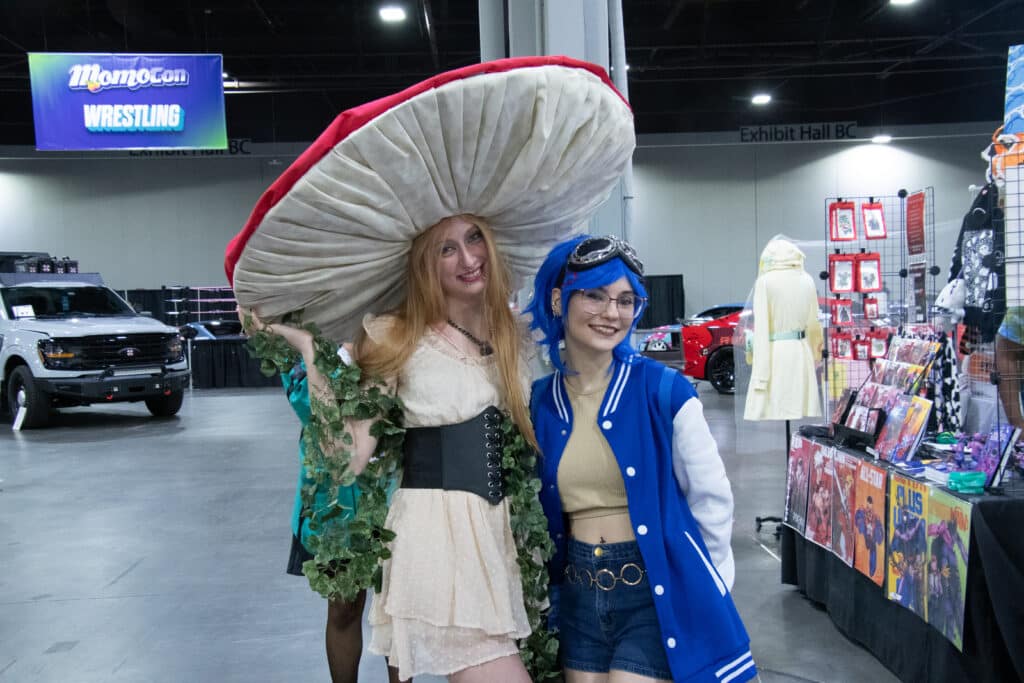
More moments from 2025; photos courtesy of MomoCon
Related
Around Atlanta
MomoCon 2025 to bring 60,000 Fans to Atlanta for a Weekend of Cosplay, Animation, Gaming and Music
Published
2 weeks agoon
May 16, 2025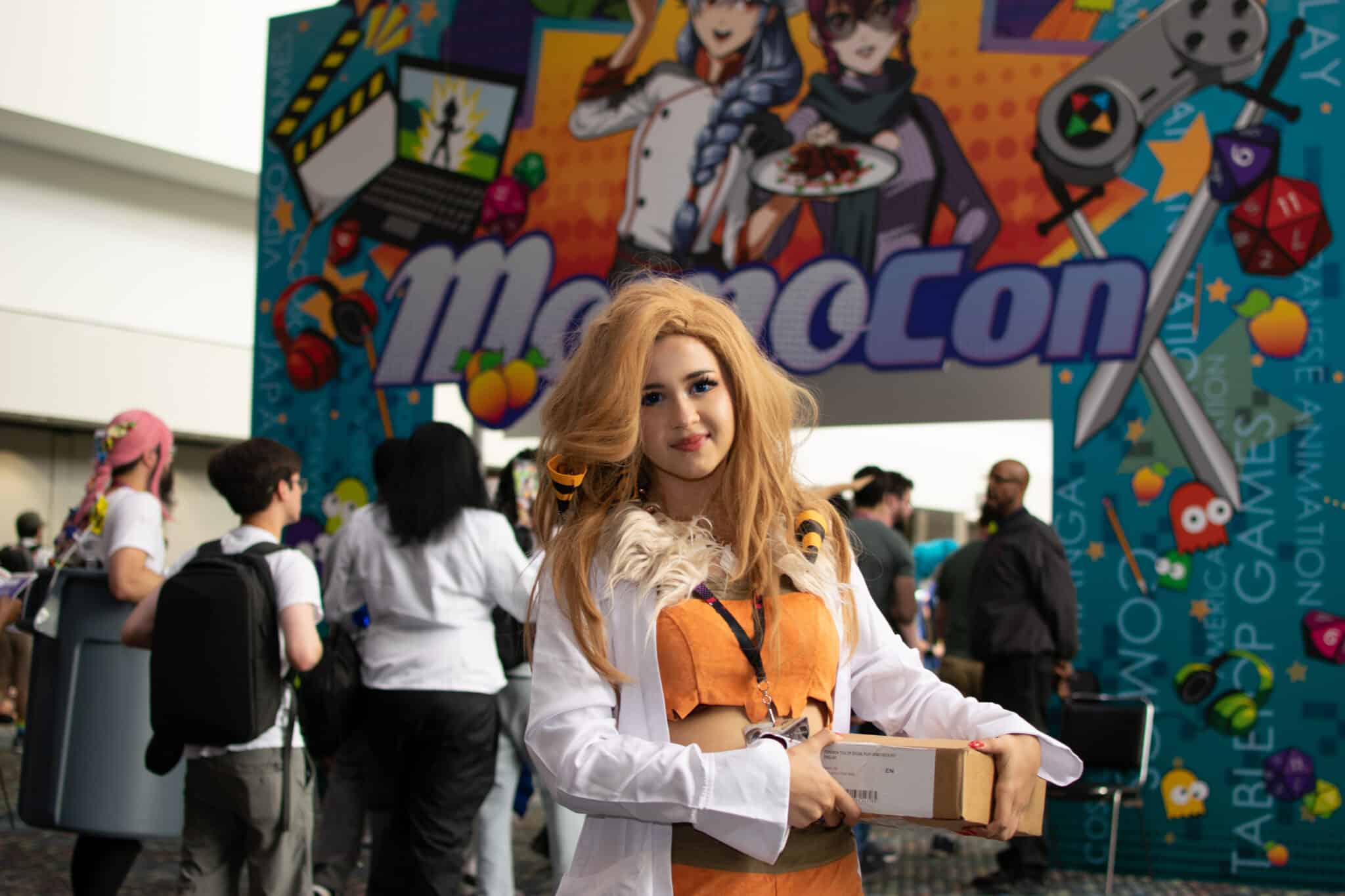
This year’s event is expected to have an economic impact of $42.4 million for the city.
MomoCon, the annual multi-genre, “geek culture” convention celebrating all things cosplay, comics, gaming, anime and music, is back for another exciting weekend at the Georgia World Congress Center, May 22–25 — marking its 20th anniversary in Atlanta.

One of the fastest growing, all-ages conventions in the country, MomoCon welcomed 56,000 guests in 2024. This year, more than 60,000 fans of Japanese anime, American animation, comics and gaming (video games, esports, tabletop, LARP) — from across the U.S. and around the world — are expected to show up and celebrate their passion.
According to the Atlanta Convention & Visitor’s Bureau, the four-day event is expected to have an economic impact of $42.2 million in metro Atlanta.
2025 highlights
New this year: The theme for MomoCon 2025 is “90s Retro.” Attendees will find a roller skating rink, expanded arcade and online gaming area and a return of the “Bring Your Own Computer” (BYOC) section.
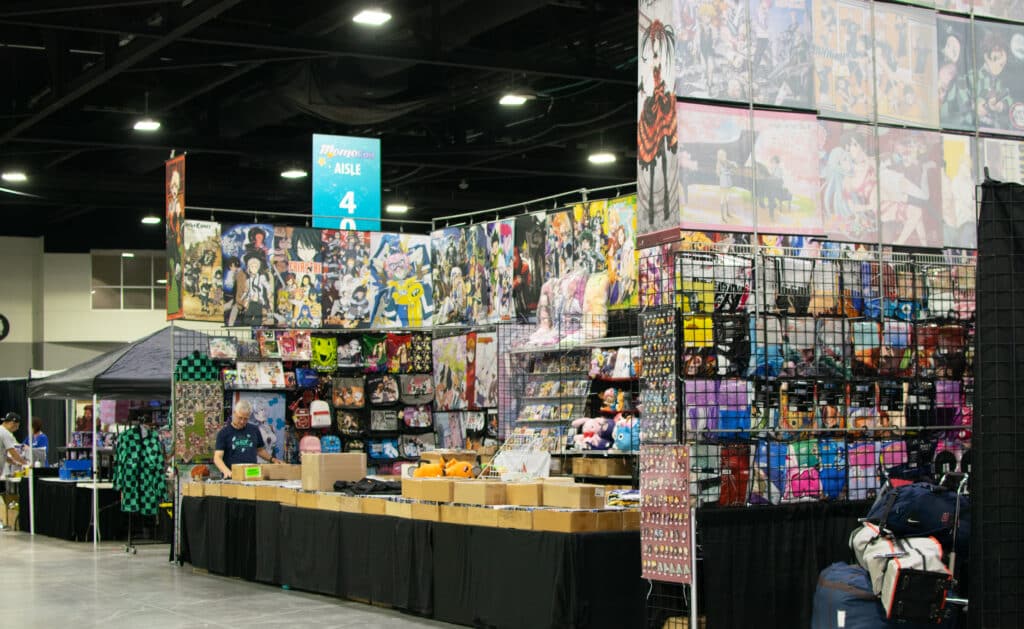
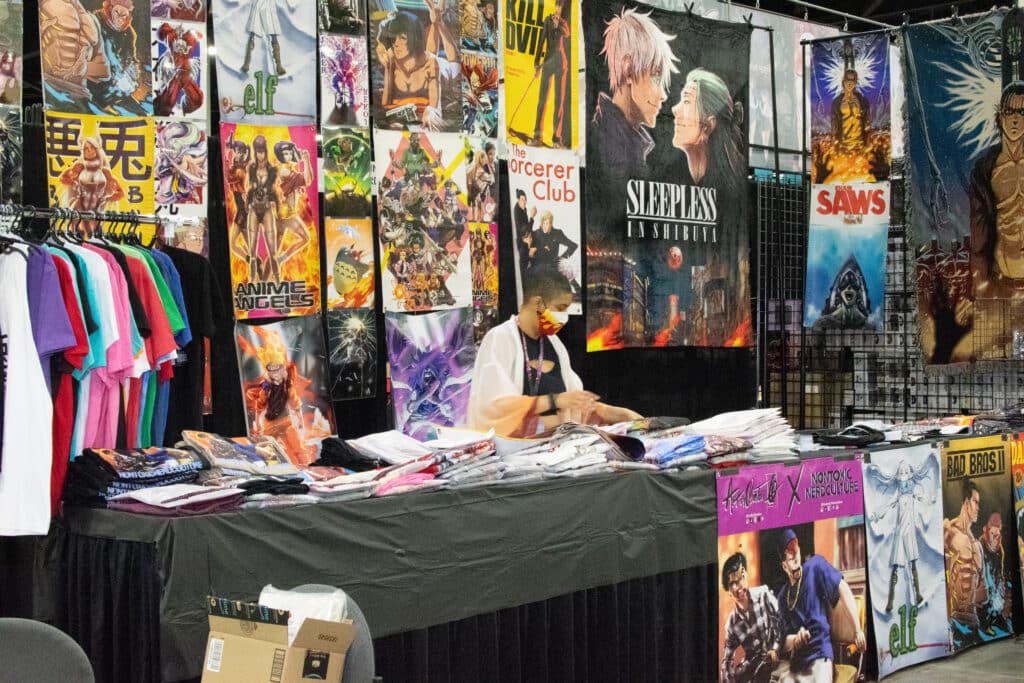
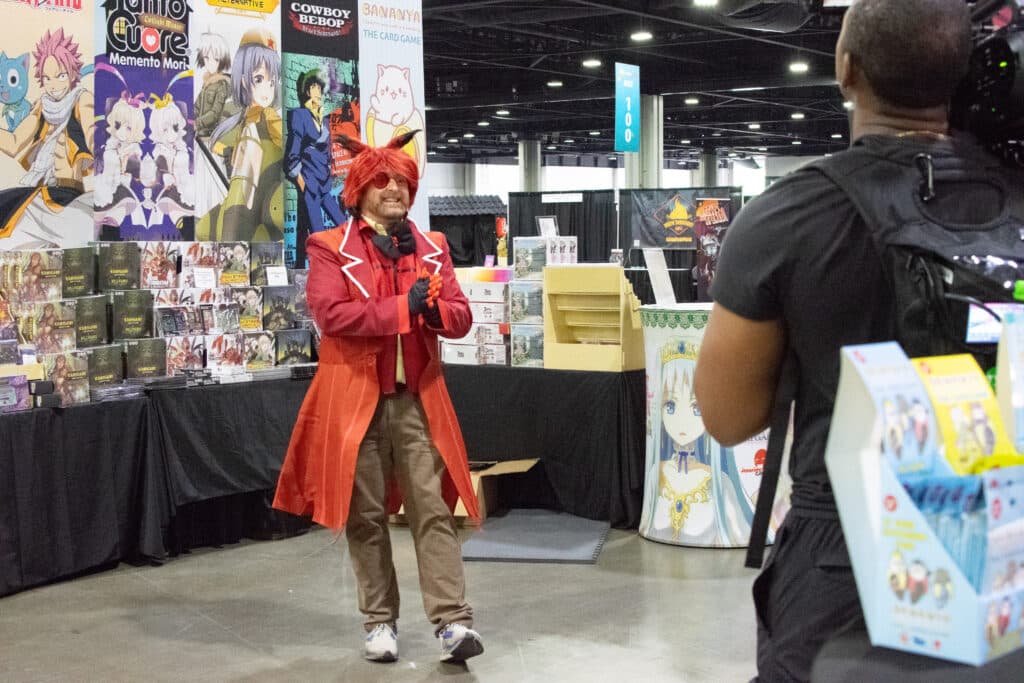


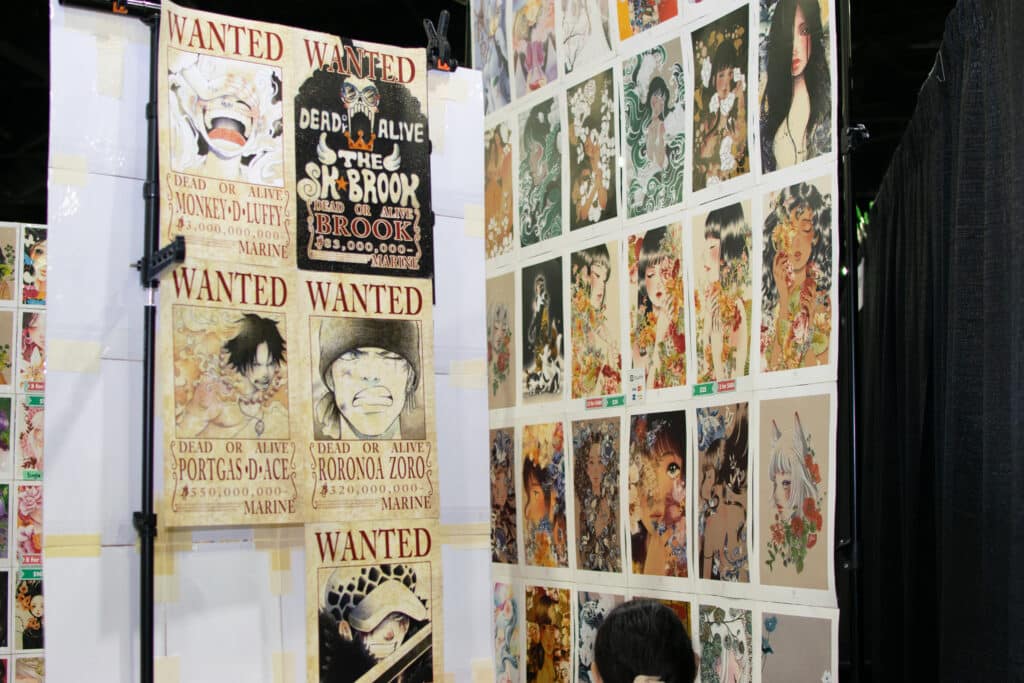
Returning fan favorites include the Artist Alley, Exhibitor’s Hall, panels, raves and afterparties, the cosplay showcase, Disney singing contest and movie screenings.
There’s also a full schedule of workshops, live performances and appearances from over 150 special guests from across industries.
Featured guests
In fact, one of MomoCon’s biggest draws is the celebrity guests on hand each year for autographs and special sessions. A few of this year’s guests include:
Darryl McDaniels (from RunDMC) — a comic book and children’s book author who has also started a line of cookies.
Shadia Amin — a Colombian cartoonist from Atlanta (SCAD grad) currently working on graphic novels.
Greg Burnham — a comic book writer from Norcross who’s created indie comic hits “Tuskegee Heirs,” “The Search For Sadiqah,” “Little Rock Files” and “The Story of Solace.” His most recent is called “Bridges,” a story of four super-powered girls who band together to save Oakland from a group of evil bio-terrorists.
Brian Stelfreeze — comic book artist and an original member of Atlanta’s famed Gaijin Studios. Stelfreeze has worked with Marvel, DC and 12 Gauge comics on titles that include Batman, The Black Panther and Catwoman.
Daron Nefcy — creator and executive producer of Disney’s “Star vs. the Forces of Evil,” Netflix’s “We the People” and Nick’s “Robot and Monster.”
Reed Shannon — Raleigh, NC-based actor and star of Netflix’s “Arcane.”
Mick Wingert — voice actor whose work has appeared in “Arcane,” “What If?,” and “Kung Fu Panda.”
David Vincent — voice actor and producer who’s worked in animation, anime, video games (Resident Evil, Halo, Tekken, Super Street Fighter) and television (“NCIS,” “Criminal Minds,” “The Mentalist”).
Ryō Horikawa — Japanese voice of Vegeta in “Dragon Ball Z,” plus roles in “Saint Seiya” (Andromeda Shun); “Detective CONAN” (Hattori Heiji); and “Mobile Suit Gundam”
Chris Sabat — veteran voice actor, director and producer with a résumé that reads like a list of anime’s greatest hits. From the proud Saiyan prince Vegeta and the stoic swordsman Roronoa Zoro to the world’s greatest hero, All Might, and the slightly tipsy Yami from “Black Clover.”
A full list of 2025 celebrity guests can be found here.
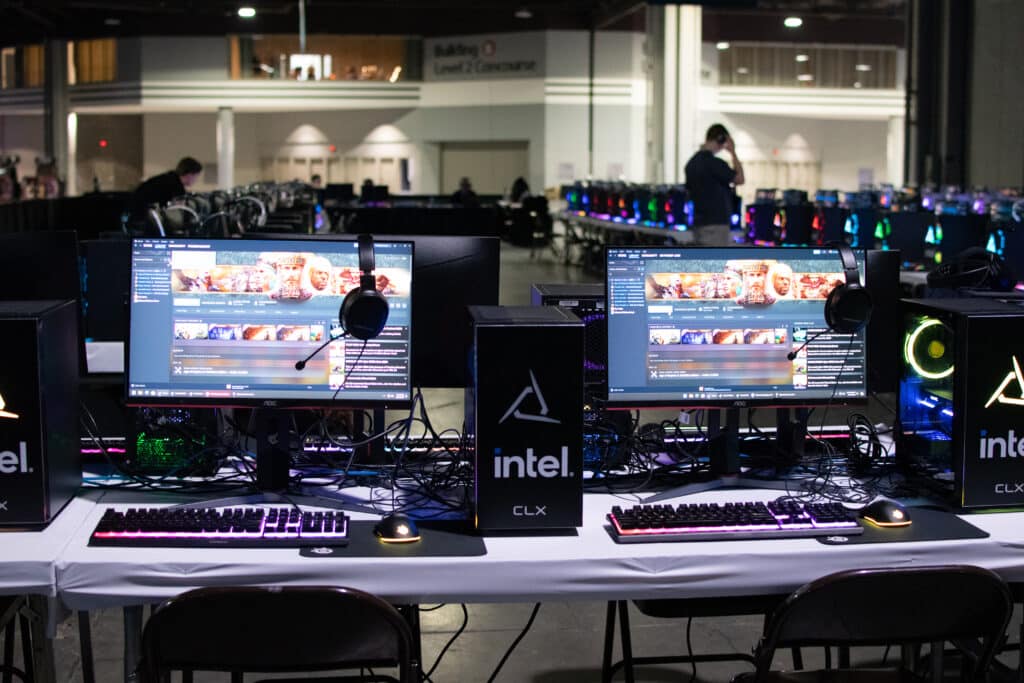

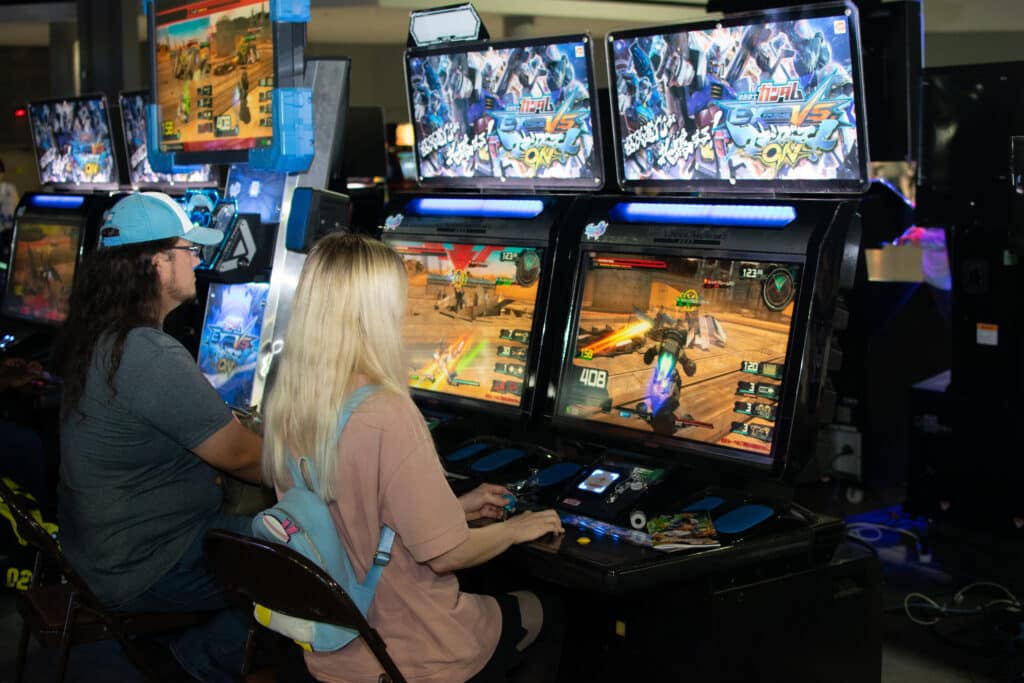
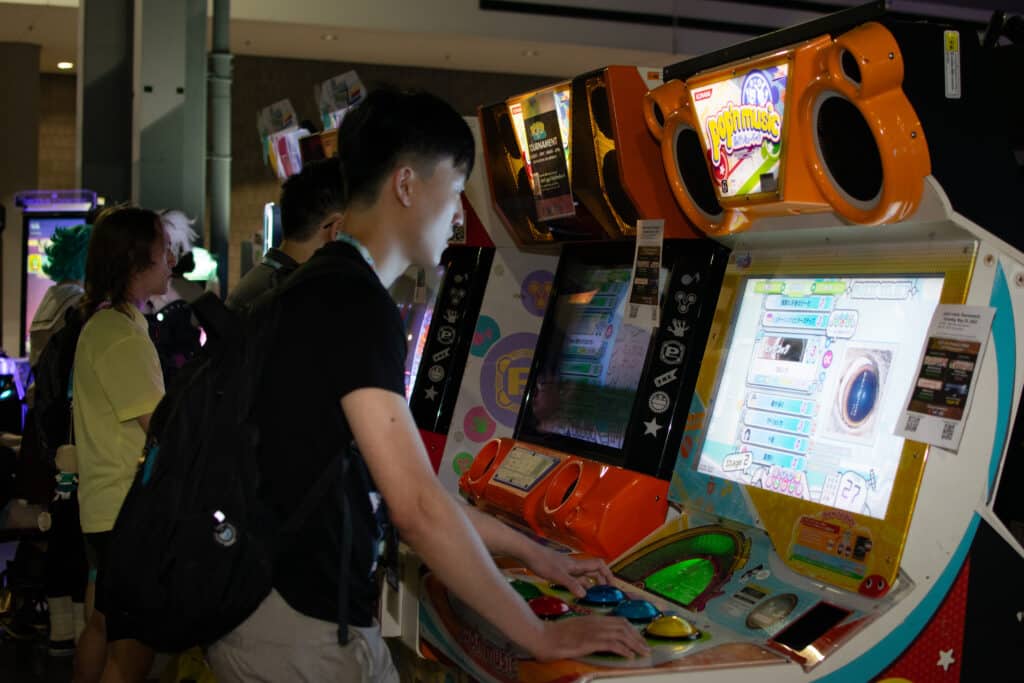

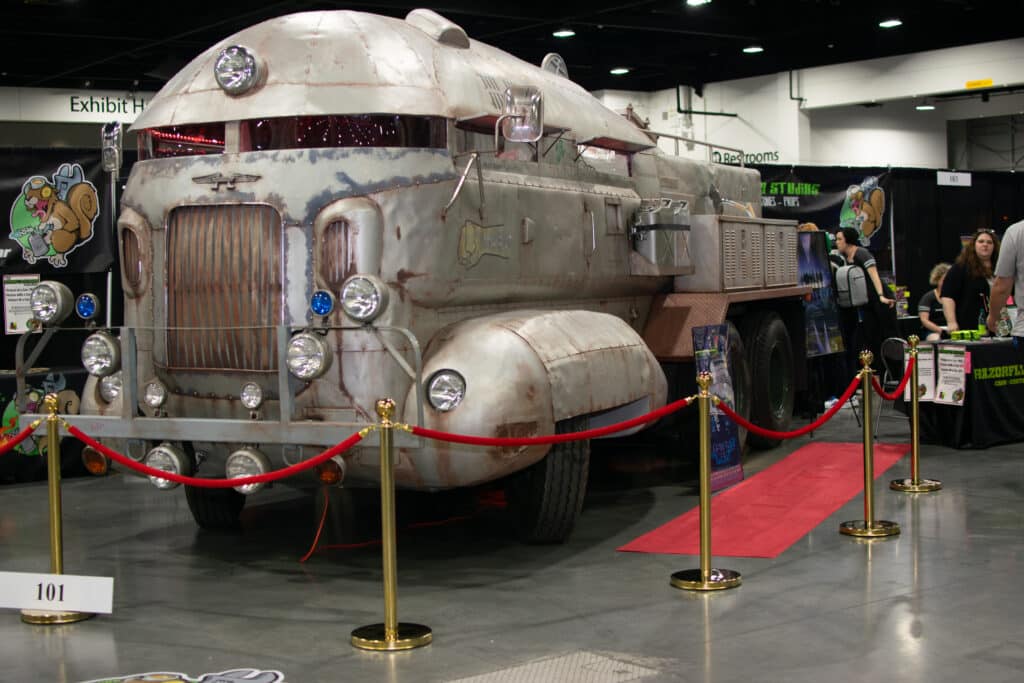
MomoCon by the numbers
- Over the years, MomoCon has grown from a 700 person, on-campus gathering to the largest event in the southeastern U.S. for fans of gaming, animation, cosplay, comics and tabletop games.
- Thousands of attendees come out to each year to enjoy gaming, costuming (cosplay), browsing the huge exhibitor’s hall and meeting celebrity voice talent, designers and writers from their favorite shows, games and comics.
- It features the second largest open game hall in the United States. Open non-stop over the weekend, it spans 300,000+ sq. ft. of arcades, esports stages, PC and LAN gaming, console tournaments and freeplay, board and card gaming, RPGs and LARP.
- More than 90,000 square feet is dedicated to tabletop games, board games, card games, role playing games and miniatures. Want to learn a new game? Instructors are on hand to teach the hottest new games (and old games too).
- There’s also 300,000 square feet for celebrity autographs, vendors, workshops and international and indie game developers.
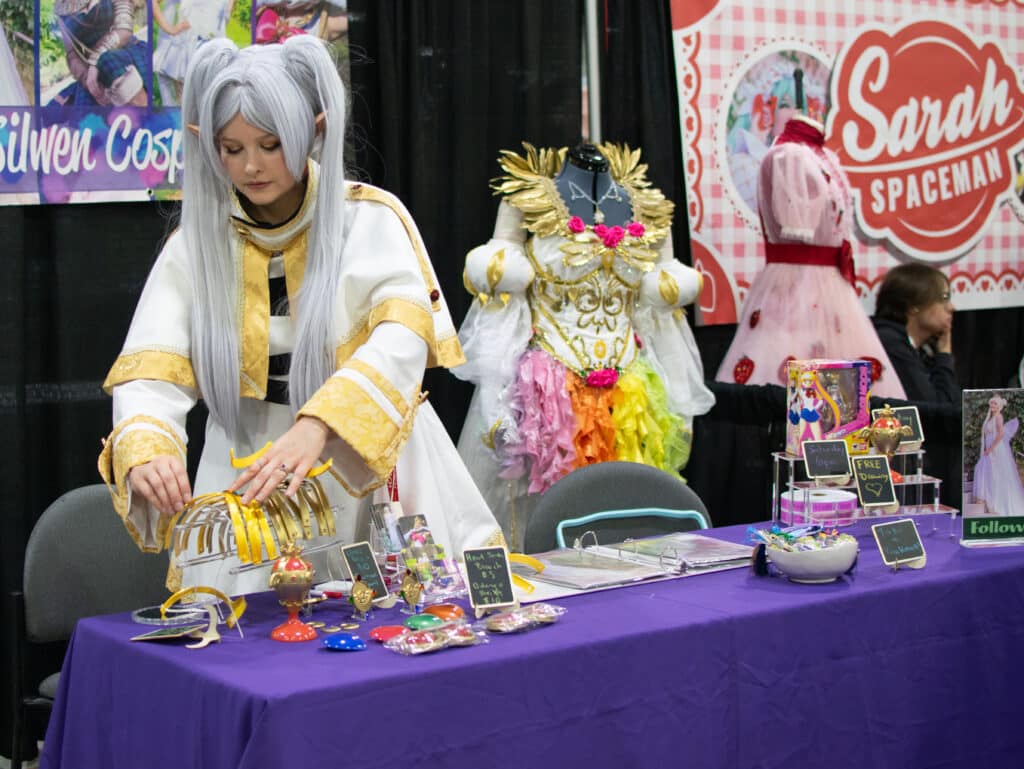

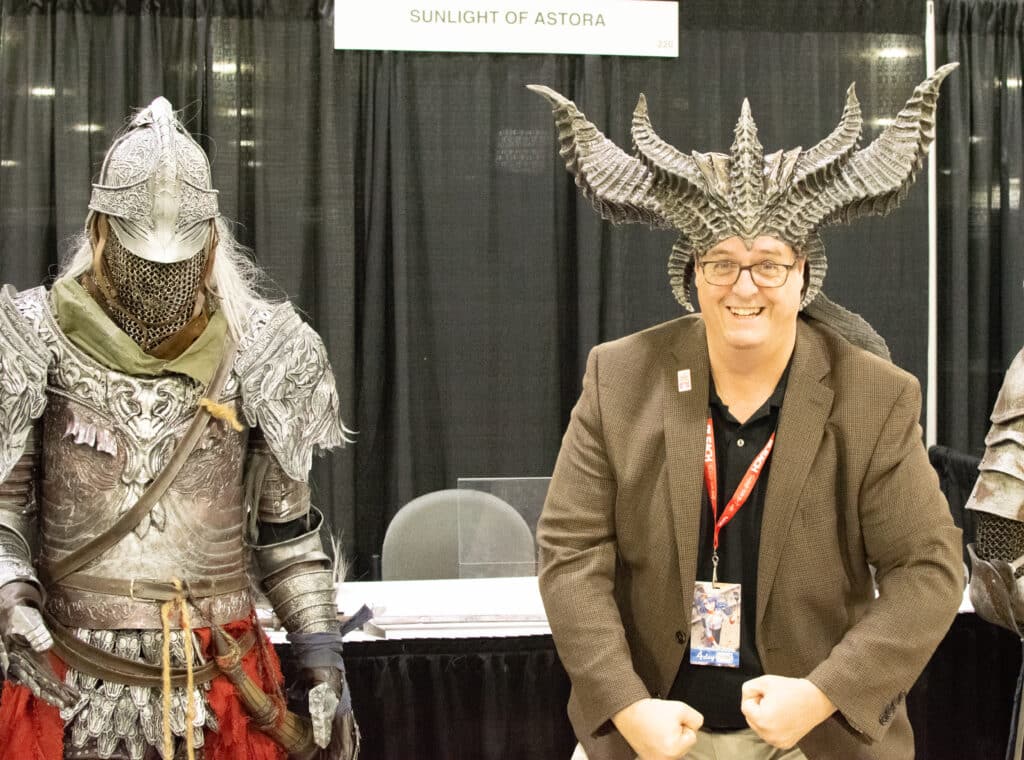
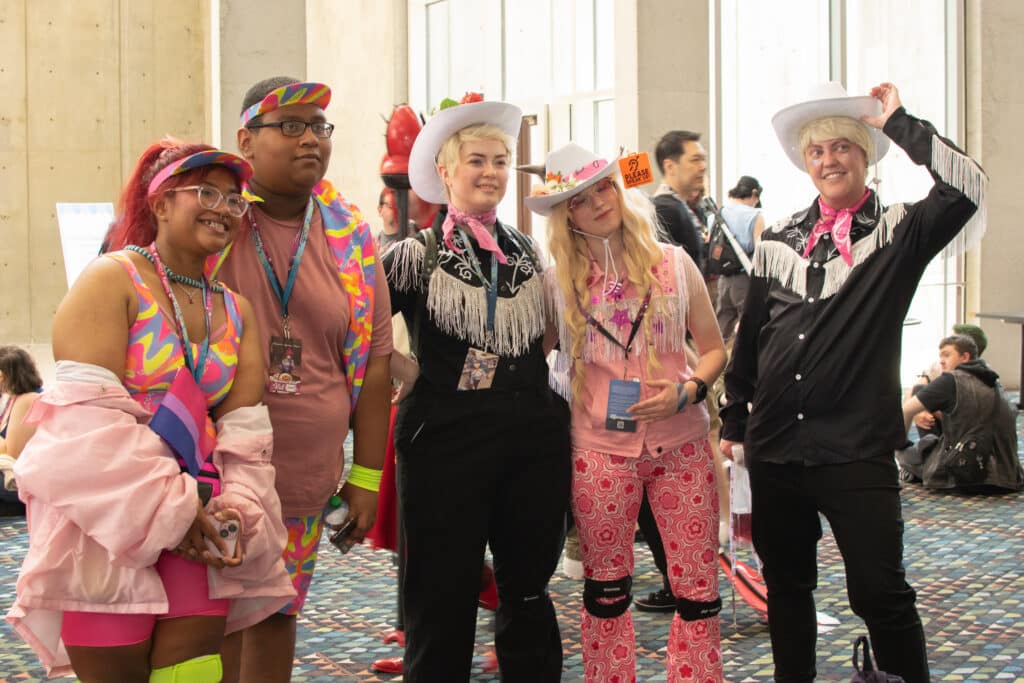
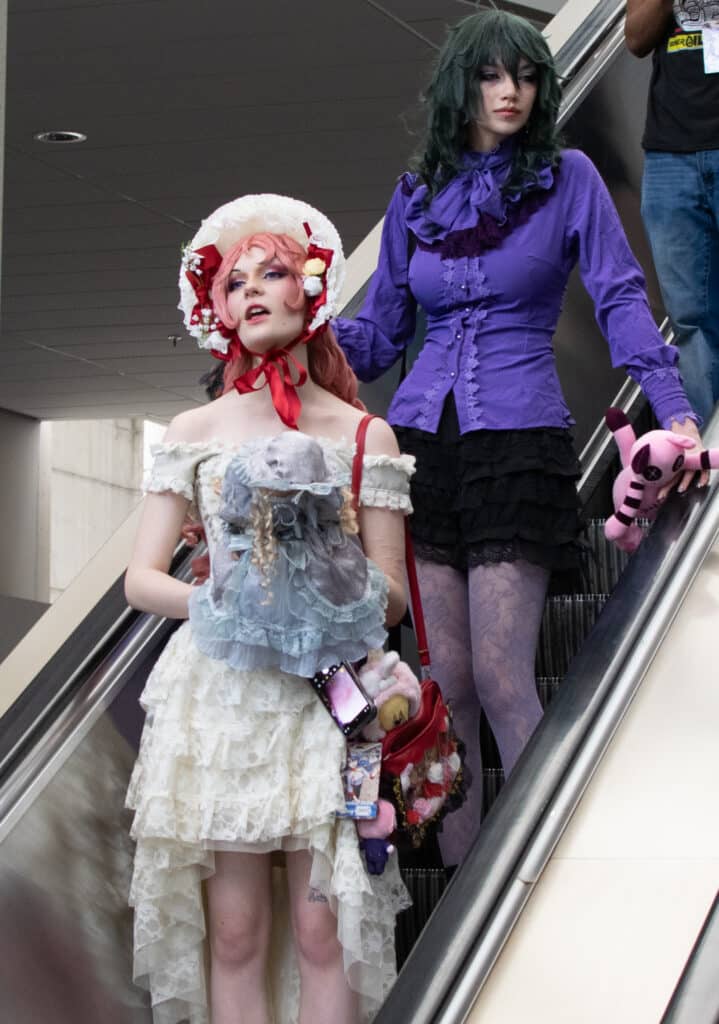
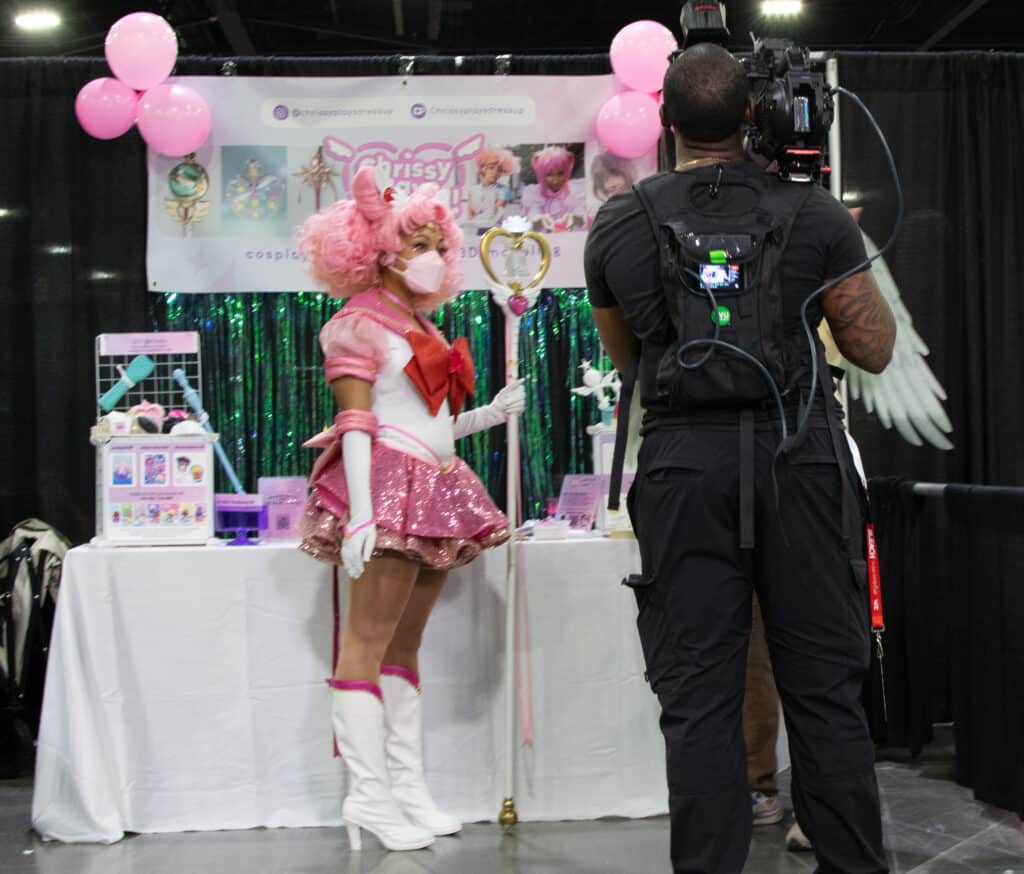
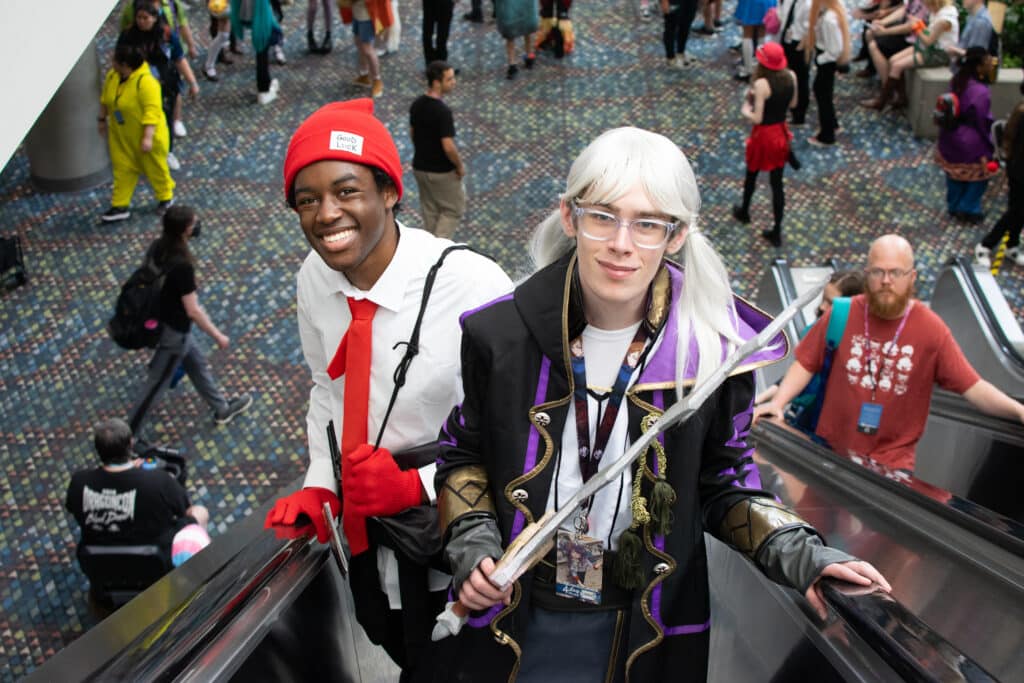
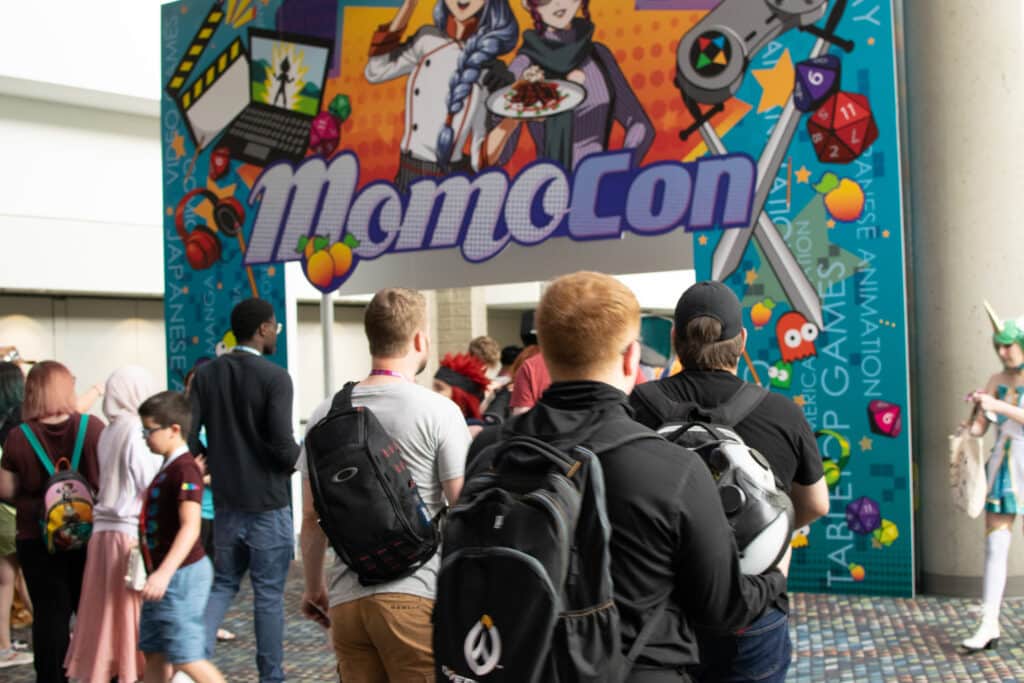
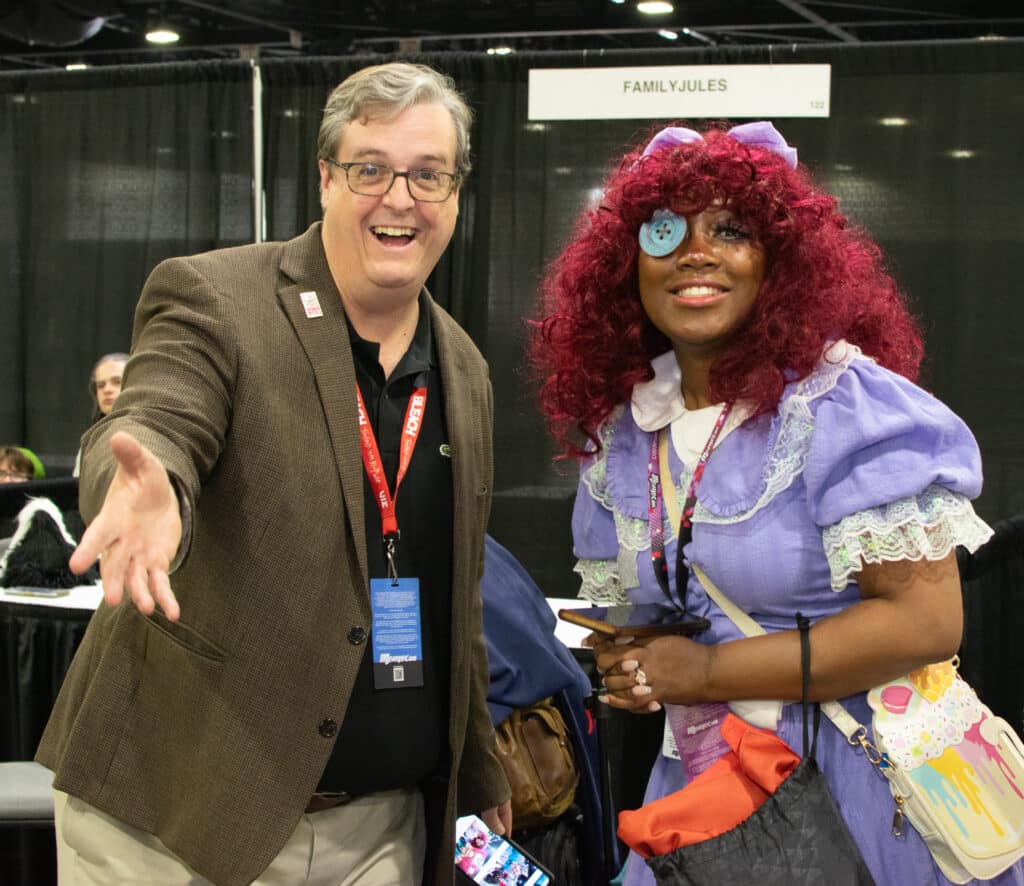
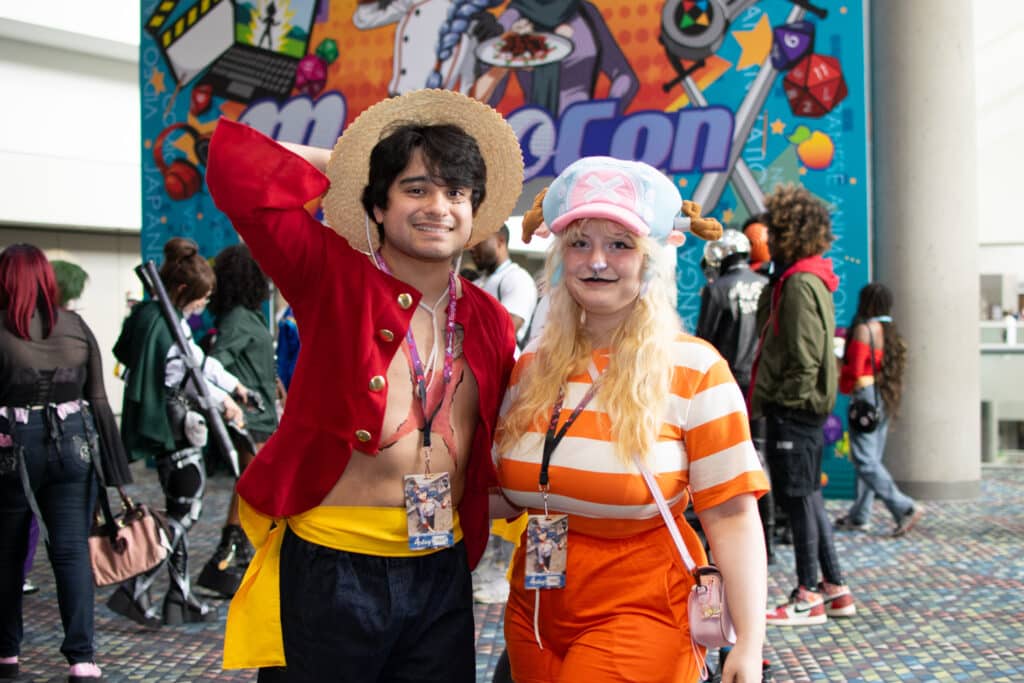
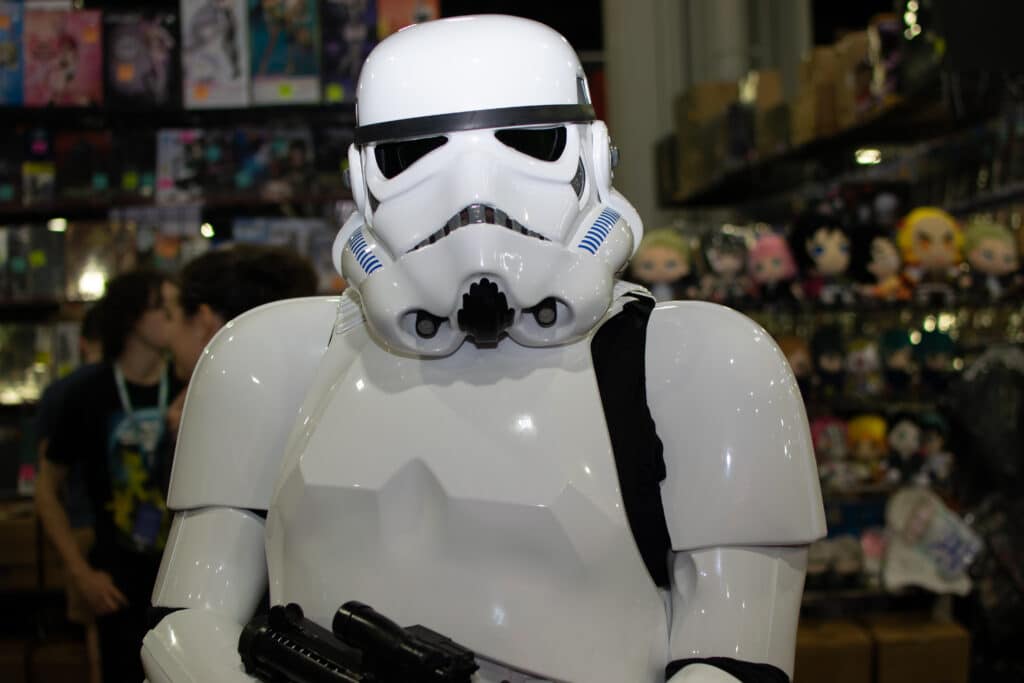
The details
MomoCon runs from 2 p.m. Thursday, May 22 through 5 p.m. Sunday, May 25 at the Georgia World Congress Center (Hall B). Additional events may take place at the nearby Omni Hotel and the Hilton Signia Downtown.
Registration is open now, with four-day or single day passes available. Four-day membership passes are $105 plus fees. Single days range from $50–$65 (kids 9 and under free).
Game tournament registration and separate concert tickets are also available.
Parking is limited in the area, and the GWCC lots do not take same-day reservations, so attendees are encouraged to take MARTA, if possible. The GWCC station is a short walk to the convention center.
You’ll find full details and a schedule of planned events at momocon.com.
Related
Around Atlanta
Mike Schleifer to Leave Alliance for Lincoln Center Theater
Published
2 months agoon
March 26, 2025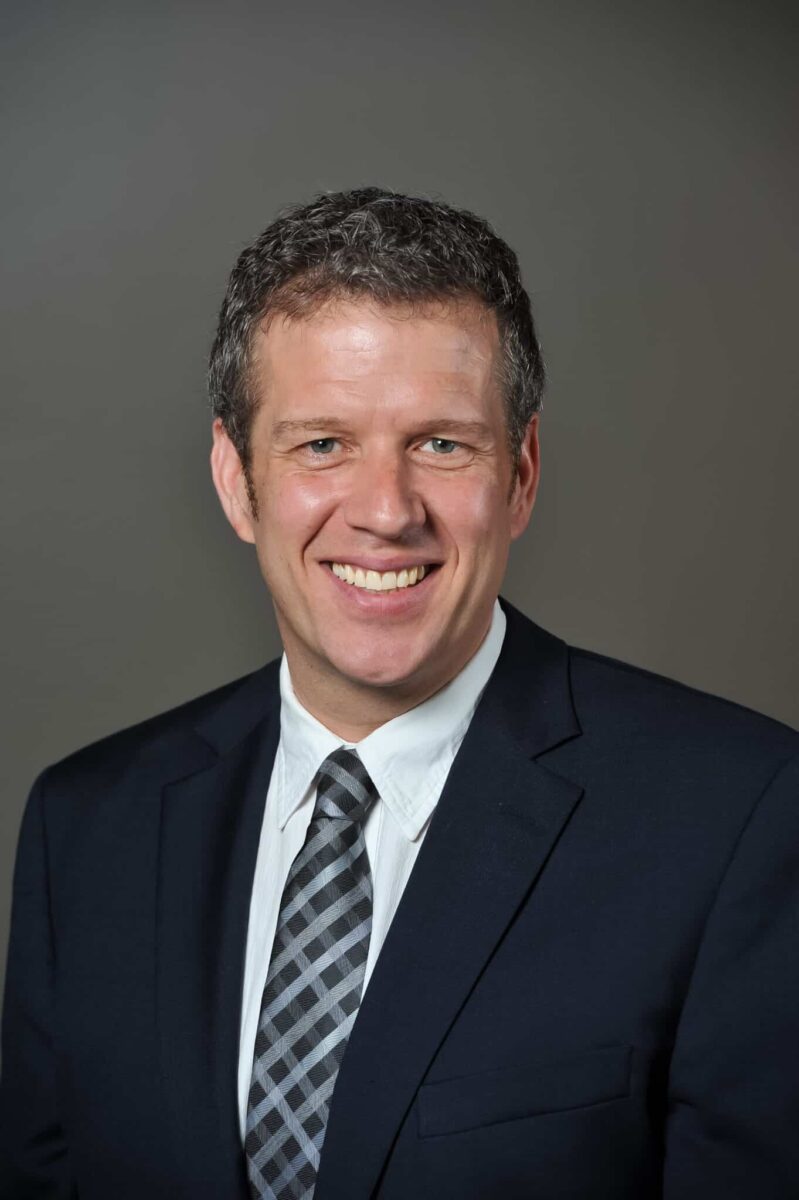
After leading Atlanta’s Alliance Theatre through two major renovation projects, a global pandemic and more than 100 productions over 11 years, Managing Director, Mike Schleifer, will leave the Alliance at the end of the year to become the managing director of Lincoln Center Theater in New York.
As managing director of the Alliance, Schleifer oversees all operational, marketing, financial, fundraising and shared services activities. In his new role, Schleifer will oversee LCT’s financial and operational health and ensure long-term sustainability and growth. He will also work to align strategic planning with artistic goals, manage the theater’s union relationships, lead budgeting, marketing and capital planning efforts and identify and develop new revenue opportunities.
“While it’s rare to find a managing director who is equally brilliant at the operational and financial part of the job, it’s simply unheard of to find one who excels on those fronts and leads with such unabashed heart, vision and humor,” said Jennings Hertz Artistic Directors Tinashe Kajese-Bolden and Christopher Moses in a joint statement.
“For the past 11 years, we had the unfathomably good fortune to have all that and more in Mike Schleifer. Mike’s willingness to bet on our mission and invest in the extraordinary talent of the Alliance staff allowed us to realize aspirational dreams we never would have dared to dream without his encouragement and faith. We’ll miss him daily but cannot wait to witness the joy he’ll bring to the Lincoln Center Theater.”
During his tenure
During his tenure with the Alliance, Schleifer led the administrative and producing teams on over 100 productions and moved four shows to Broadway, including last season’s “Water for Elephants” and this season’s “Maybe Happy Ending.”
He spearheaded the $36 million renovation of the award-winning Coca-Cola Stage and is currently leading the $26 million renovation of the Goizueta Stage for Youth and Families. Under his leadership, the Alliance more than doubled its operating budget, tripled its endowment and continued to lead the country in work developed for young audiences.
“It’s been a true honor and privilege to work, lead and learn at the Alliance Theatre for the last eleven years,” said Schleifer. “I’m deeply grateful to the staff, artists and audiences of the Alliance Theatre and Woodruff Arts Center who have made this journey so rewarding.”
“We’ve achieved remarkable milestones — from moving productions to Broadway to completing transformative capital projects,” he continued. “I’m excited for what’s next, but I won’t be leaving until we cut the ribbon on the new Goizueta Stage for Youth and Families — a project that reflects the Alliance’s deep commitment to the next generation of theatergoers, both with the physical theater space and with the endowment we’re raising to make the work on that stage financially accessible for all.”
Additional roles
In addition to his work at the Alliance, Schleifer serves on the boards of the League of Resident Theatres and True Colors Theatre Company. In 2018 he co-founded Volute Partners, a theatre consultancy focused on capital projects and the subsequent operational support and budgets needed to sustain them.
“We are immensely grateful for Mike’s leadership and tireless dedication to the Alliance Theatre. His vision, passion, and expertise have left an indelible mark on this organization,” said Hala Moddelmog, president and CEO of Woodruff Arts Center.
“We take great pride in seeing him step into this well-deserved opportunity, knowing he will make a lasting impact at Lincoln Center Theater.”
New leadership
The leadership of the Woodruff Arts Center, with support from members of the Alliance Theatre Board of Directors, will conduct a national search for the Alliance’s next managing director, led by executive search firm, Corps Team.
“On behalf of the Alliance’s board of directors, we want to thank Mike for more than a decade of service to the Alliance and Atlanta community,” said Kendrick Smith, Alliance Theatre Board of Directors chair. “He oversaw a period of unprecedented growth with a spirit of collaboration and unwavering commitment to the theater’s artistic vision.”
“As we begin the national search for his successor, we remain dedicated to the theater’s mission of expanding hearts and minds, on stage and off.”
About the Alliance Theatre
Founded in 1968, Alliance Theatre is the leading producing theater in the Southeast, reaching more than 165,000 patrons annually.
The Alliance is led by Jennings Hertz Artistic Directors Tinashe Kajese-Bolden and Christopher Moses and Managing Director Mike Schleifer and is a recipient of the Regional Theatre Tony Award® for sustained excellence in programming, education and community engagement.
In January 2019, the Alliance opened its new, state-of-the-art performance space, The Coca-Cola Stage at Alliance Theatre.
Known for its high artistic standards and national role in creating significant theatrical works, the Alliance has premiered more than 140 productions, including eleven that have transferred to Broadway.
Additionally, the Alliance education department reaches more than 90,000 students annually through performances, classes, camps and in-school initiatives designed to support teachers and enhance student learning.
The Alliance Theatre values community, curiosity, collaboration and excellence and is dedicated to representing Atlanta’s diverse community with the stories they tell, the artists, staff and leadership they employ and the audiences they serve.
For more information, visit alliancetheatre.org.
Related
Read the Digital Edition
Subscribe
Keep Up With Peachtree Corners News
Join our mailing list to receive the latest news and updates from our team.
You have Successfully Subscribed!

From Boardrooms to the Himalayas: Vandana’s Journey to Purpose and Growing with Intention [Podcast]

Guardians of the Jukebox to Play the VoxStage on May 31

“Geek Culture” Shines at 2025 MomoCon

Brandon Branham Honored for Transformative Leadership in Peachtree Corners

Music Matters Productions Expands Peachtree Corners Headquarters

Celebration and Community: ICAGeorgia Wraps Up School Year with Two Festive Events

Vox-Pop-Uli Launches RED Initiative for Veterans’ Support

The PCBA Awards $500 to Light Up The Corners at After-Hours Event

Peachtree Corners Festival Awards Debbie Mason Drama Scholarship for 2025

Vox-Pop-Uli Launches RED Initiative for Veterans’ Support

The PCBA Awards $500 to Light Up The Corners at After-Hours Event

“Geek Culture” Shines at 2025 MomoCon

Celebration and Community: ICAGeorgia Wraps Up School Year with Two Festive Events

Guardians of the Jukebox to Play the VoxStage on May 31

Music Matters Productions Expands Peachtree Corners Headquarters

Brandon Branham Honored for Transformative Leadership in Peachtree Corners

Light up the Corners [Video]

Capitalist Sage: Business Leadership in Your Community [Podcast]

Cliff Bramble: A Culinary Adventure through Italy

Top 10 Brunch Places in Gwinnett County

A Hunger for Hospitality

THE CORNERS EPISODE 3 – BLAXICAN PART 1

Top 10 Indoor Things To Do This Winter

The ED Hour: What it takes to Remove Barriers from Education








